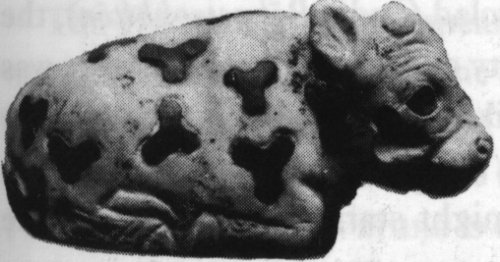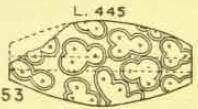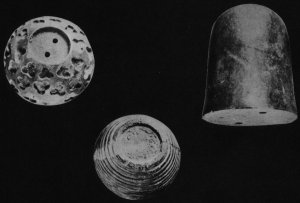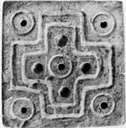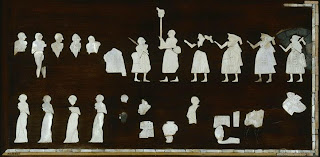This is an addendum to
Bhārata rāṣṭra as depicted in Vedic texts: semantic analyses and cultural framework
Bhārata rāṣṭram
(March, 2006.)
Vyas, Arvind; Kalyanaraman, Srinivasan; and Sastry, BVK
Abstract
The concept of bhArata as a rASTra (nation) can be traced in the Vedic texts. The name bhArata has a wider meaning than the land of bharata clan. Derived from the root ‘bhar’, bhArata symbolizes the entity that nourishes and supports her people. The derivatives of root ‘bhR’ can be traced in many Indian languages in context of support, protection (and fighting) as well as in the metal-working terminology. The term rASTra is used for nation of people (ganrASTram); which is supported by the supporters of the nation (rASTrabhRtya) who also are protectors of the people (janabhRtya). The root ‘bhR’ also cognates with the root ‘vR’ mainly for the derived words meaning protection or fighting.
We have based our study only on Veda and VedAnga (Nirukta of Yazka being part of VedAnga).
India is known as bhArata. Though, historically the name “bhArata” could be associated with the “bharata” clan of Vedic people; the name “bhArat” has a meaning wider than (land) of “bharata”.
Though, semantically the word “bhArat” is masculine; the name is also used in feminine form to symbolize matRbhumI of Indian people as “bhArata mAtA” or “mA bhAratI”. bhAratI is one of the 3 principal Vedic divinities; “iLA”, “sarasvatI” and “bhAratI” or “mahI”. “bhAratI” or “mahI” as synonyms points to the name of the motherland or nation of the Vedic people. The name “bhAratI” appears at not less than 10 places in Rg Veda; and her presence is built through the scriptures.
CONCEPT OF NATION OR RASTRA
In whole Rg Veda one mortal stands apart from others; dignified to the status of divinity; he is trasdasyu paurukutsA. In RV 4.42.1 he proclaims in Atmastuti portraying himself as a divine ruler of a nation of immortals whom even Varuna and other divinities would follow:
मम द्विता राष्ट्रं क्षत्रियस्य विश्वायोर्विश्वे अमृता यथा नः ।
क्रतुं सचन्ते वरुणस्य देवा राजामि कृष्टेरुपमस्य वव्रेः ॥
“mama dvita rASTRam kSatriyasya vizvorvizve amRtA yathA naH
kratuM sacante varuNasya devA rAjAmi kRTerupamasya vavre”
In Atharva Veda; the concept of rASTra is consolidated with many occurrences of the word rASTra; for example, in AV 13.1.1
उदेहि वाजिन्यो अप्स्व1न्तरिदं राष्ट्रं प्र विश सूनृतावत् ।
यो रोहितो विश्वमिदं जजान स त्वा राष्ट्राय सुभृतं बिभर्तु ।।
udehi vAjinyo apsva~ntaridam rASTram para viz sUnRtAvat
yo rohito vizvamidam jajAn sa tvA rASTrAya subhRtam bibhartu
“Rise up, O steed, that art within the waters, enter this kingdom (nation), rich in liberal gifts! Rohita (the red sun) who has begotten this all, shall keep thee well-supported for sovereignty!”
AV 3.4 is a prayer at the election of king. This sukta has couple of occurrences of the word rASTra.
आ त्व गन्राष्ट्रं सह वर्चेसोदिहि प्राङ्गिवशां पतिरेकराट् त्वं वि राजा ।
सर्वास्त्व राजनप्रदिशो ह्वयन्तुपसद्यो नमस्यो भवेह । 1 ।
त्वां विशो वृणतां राज्याय त्वामिमाः प्रदिशः पञ्च देवीः ।
वर्ष्मन्राष्ट्रस्य ककुदि श्रयस्व ततो न उग्रो वि भजा वसूनि । 2 ।
1. A tvA ganrASTram saha varcasodihi prAn.vizAm patirekarAT tvam vi rAja sarvAstva rAjanpradizo hvayantupasadyo namasyo bhaveh.
2. tvam vizo vRNatam rAjyAya tvAmimAH pradizaH pan.c devIH
varSmanrASTrasya kakudi zrayasva tato na ugro vi bhajA vasUni.
(Thy) kingdom hath come to thee: arise, endowed with luster! Go forth as the lord of the people, rule (shine) thou, a universal ruler! All the regions of the compass shall call thee, O king; attended and revered be thou here! Thee the clans, thee these regions, goddesses five, shall choose for empire! Root thyself upon the height, the pinnacle of royalty: then do thou, mighty, distribute goods among us!
We note the presence of the word “rAjyam” in AV 3.4.2. “rAjyam” is an administrative or governing aspect of “rASTra”. This is reinforced fby Yajurveda Taittiriya SamhitA. TSYV 1.8.10.3-5 gives an insight into this aspect of rASTra of “bharata”; i.e., “bhArata”.
...ये देवा देवसुवः स्थ त इममामुष्यायणमनमित्राय सुवध्वम्महते क्षत्राय महत आधिपत्याय महते जानराज्यायैष वो भरता राजा सोमोऽस्माकम्ब्राह्मणाणाँ् राजा प्रति त्यन्नाम राज्यमधायि स्वां तनुवं ...
(ye devA devasuvaH stha ta imamAmuSyAyan.amanamitrAya suvadhvammahate ks.atraya mahat AdhipatyAya mahate jAnarAjyAyaiSa vo bharatA rAjA somosmAkamabrahmaNANAm rAjA pratityannAm rAjyamadhAyi svam tanuvam ...)
O ye gods that instigate the gods, do ye instigate him, descendant of N. N., to freedom from foes, to great lordship, to great overlordship, to great rule over the people.
This is your king, O Bharatas ; Soma is the king of us Brahmans.
This kingdom hath verily been conferred…
This demonstrates the concept of nation (of the “bharata” people), bhArata; her wellbeing.
THE TERMS: BALAM, BIBHARTE
1. Reference from Nirukta
anna.naamaany.uttaraany.astaavimzatih/(3,9)[273]
annam.kasmaad,.aanatam.bhuuta5bhyas,.atter.vaa/(3,9)[273]
atti.karmaaNa.uttare.dhaatu1p.daza/(3,9)[273]
bala.naamaany.uttaraany.astaavimzatih/(3,9)[273]
balam.kasmaad,balam.bharam.bhavati,.bibharteh/(3,9)[273]
dhana.naamaany.uttaraany.astaavimzatir.eva/(3,9)[273]
dhanam.kasmaat,.hinoti.iti.satah/(3,9)[273]
2. The context is interpretation of word forms and derivation of word meanings.
2,1.atha.nirvacanam
2,1.tad.yeSu.padeSu.svara.samskaarau.samarthau.praadezikena.vikaareNa. (guNena.Bh).anvitau.syaataam.tathaa.taani.nirbruuyaad
2,1.atha.ananvite.arthe.apraadezike.vikaare.artha.nityah.pariikSeta.kenacid.vRtt\
i.saamaanyena
2,1.avidyamaane.saamaanye.apy.akSara.varNa.saamaanyaan.nirbruuyaan.na.tv.eva.na.\ nirbruuyaat
2,1.na.samskaaram.aadriyeta.vizayavatyo.(hi.Bh).vRttayo.bhavanti
2,1.yathaa.artham.vibhaktiih.sannamayet
2,1.prattam.avattam.iti.dhaatu.aadii.eva.zisyete
2,1.atha.apy.aster.nivRtti.sthaaneSv.aadi.lopo.bhavati.stah.santi.ity
2,1.atha.apy.anta.lopo.bhavati.gatvaa.gatam.iti
2,1.atha.apy.upadhaa.lopo.bhavati.jagmatur.jagmur.iti
2,1.atha.apy.upadhaa.vikaaro.bhavati.raajaa.daNDii.iti
2,1.atha.apy.varNa.lopo.bhavati.tattvaa.yaami.iti
2,1.atha.apy.dvi.varNa.lopas.tRca.iti
2,1.atha.apy.aadi.viparyayo.bhavati.jyotir.ghano.bindur.vaaTya.iti
2,1.atha.apy.aadi.anta.viparyayo.bhavati.stokaa.rajjuh.sikataas.tarku.iti
2,1.atha.apy.anta.vyaapattir.bhavati
3. The basis for the statement at 2 is the opening remarks in Nighatu reading as below:
1,1.samaamnaayah.samaamnaatah.sa.vyaakhyaatavyah
1,1.tam.imam.samaamnaayam.nighaNTava.ity.aacakSate
1,1.nighaNTavah.kasmaan.nigamaa.ime.bhavanti
1,1.chandobhyah.samaahRtya.samaahRtya.(samaahatya.R).samaamnaataah
1,1.te.nigantava.eva.santo.nigamanaan.nighaNTava.ucyanta.ity.aupamanyavah
1,1.api.vaa.hananaad.eva.syuh.samaahataa.bhavanti
1,1.yad.vaa.samaahRtaa.bhavanti
1,1.tad.yaany.[etaani.Bh].catvaari.pada.jaataani.naama.aakhyaate.ca.upasarga.nip\ aataaz.ca.taani.imaani.bhavanti
1,1.tatra.etan.naama.aakhyaatayor.lakSaNam.pradizanti
1,1.bhaava.pradhaanam.aakhyaatam.sattva.pradhaanaani.naamaani
1,1.tad.yatra.ubhe.bhaava.pradhaane.bhavatah
1,1.puurva.aparii.bhuutam.bhaavam.aakhyaatena.aacaSTe.vrajati.pacati.iti=
1,1.upakrama.prabhRty.apavarga.paryantam.muurtam.sattva.bhuutam.sattva.naamabhir\
.vrajyaa.paktir.iti
1,1.ada.iti.sattvaanaam.upadezo.gaur.azvah.puruSo.hastii.iti
1,1.bhavati.iti.bhaavasya.aaste.zete.vrajati.tiSThati.iti
1,1.indriya.nityam.vacanam.audumbaraayaNah
4. The verbal root (dhatu) is 'Bhru' to support / 'Bhrut' .
The desiderivative of the verb is made and transformed to a noun (pratipadika) through the grammatical technical processing of 'luk' .
This is related to the verb Bhru processed thus ( with the desiderivative and luk ).
WHERE COULD THE NATION OF BHARATA BE LOCATED?
Nirukta 1.11 enumerates the names of vAc i.e. personalification of speech as follows:
श्लोकः । धारा । इळा । गौ । गौरी । गान्धर्वी । गभीरा । गम्भीरा । मन्द्रा । मन्द्राजनी । वाशी । वाणी । वाणीची । वाणः । पविः । भारती । धमनिः । नाळी । मेना । मेळिः । सूर्या । सरस्वती । निवित् । स्वाहा । वग्नुः । उपब्दिः । मायु । काकुतः । जिह्वा । घोषः । स्वरः । शब्दः । स्वनः । ऋक् । होत्रा । गीः । गाथा । गणः । धेना । ग्ना । विपा । नना । कशा । धिषणा । नौ । अक्षरम् । मही । अदितिः । शची । वाक् । अनुष्टुप् । धेनुः । वल्गुः । गल्दा । सरः । सुपर्णी । बेकुरेति वाचः ।
zlokah; dhArA; iLA; gau; gaurI; gandharvI; gabhIrA; gambhIrA; mandrA; mandrAjanI; vazI; vANI; vANIcI; vANAH; paviH; bhAratI; dhamanIH; naLIh; menA; *melLIh*; suryA;
sarasvatI; nivitA; svAhA; vagnu …
In this we get several synonyms for vAc which correspond to names for the land of bharata people, viz. bhAratI, and mahI. A name that stands out is meLiH; this word cognates with Melli that Greeks reported during the invasion by Alexandra and also with MeluHHA a name that is recorded in Sumerian records. The equivalence of meLiH with mahI and bhAratI and phonetic correspondence with Melli; MeluHHA and MAlavA indicate that Vedic, Sumerian and Greek records perhaps indicate to the same location. The synonym sarasvatI (which is also cognate with a geographical feature) also hint s at the location.
It is generally accepted that Rgveda was compiled in greater Punjab; and the presence of the aforesaid locations well within this geographic area is a positive sign!
WHAT BHARATI OR BHARATA COULD MEAN?
So as far as bhArat (or vedic godess bhAratI) is concerned we could have following attributes assigned: *
- one who supports, maintains, nourishes and considers (her domain);
- one who weighs, is mighty, who has mass(es), multitude and is bountiful,
- one who bears the burden
- one who battles
- and one whose songs of praise are shouted!
GLOSSARY OF TERMS
The context of the quote '*Balam Bharam Bhavati Bibhartheh" *words used
in Nirukta' is the list of synonyms for the word 'bala' = power, energy.
One cluster of meanings relates to bhar 'to fill' [exemplified by the
creation of an alloy,
bhart 'alloy'] and another cluster of meanings relates to bhara 'battle'. Niruktam 4.24 interprets bhara as 'battle'
bhart = a mixed metal of copper and lead; bhart-i_ya_ = a brazier, worker in metal;
bharatiyo = caster of metal (G.) These semantics are relatble to the root meaning of bhar 'to fill'.
There is semantic expansion in lexemes such as:
barati-da_ra a merchant who has bandy-loads conveyed from one place to another (Ka.)
While the context for the explanation bibharte, is relatable to anna, bala, dhana, it is also related to sam.gra_ma 'battle'.
It will be seen from the following lexemes that
two sets of semantics are relatable to bhara 'battle': 1. hired soldier (MBh.); 2. bhar. 'hero' (B.)
dan.d.a-bhr.t a potter (Skt.lex.) bhr.tya to be nourished or maintained: a servant; the minister of a king; bhr.tye maintenance, support, sustenance, food; hire, wages (Ka.)( Ka.lex.)
bhr.ta hireling, mercenary (Ya_jn~.); bhat.a hired soldier, servant (MBh.)(CDIAL 9588). bhr.ta carried, brought (MBh.); hired, paid (Mn.); hireling, mercenary (Ya_j.com.); bhr.taka hired servant (Mn.); bhad.a soldier (Pkt.); bhad.aa member of a non-Aryan tribe (Pkt.); bhat.ahired soldier, servant (MBh.); hireling, servant, soldier (Pali); hired servant (As'.); bhar. hero, brave man; *adj*. mighty (Ku.); soldier, servant, *nom. prop* (B.); warrior, hero, opulent person (G.); *adj*. strong, opulent (G.); bhar.ilhero, servant (B.);
bel.e_ soldier (Si.)(CDIAL 9588).
bhr.ti support, food (RV.S'Br.); wages, hire (Mn.); bhati wages (Pali); bhatika_ fee (Pali);
s'arira-hud.iyami in the maintenance of the body (NiDoc.); bhai-, bhii-, bhui- wages (Pkt.); bhar.il servant (B.)(CDIAL 9591).
bat.a, ban.t.a (Tadbhava of bhat.a) a brave warrior (Ka.); ban.d.a_ya quarrelling, revolt (Ka.); bhan.d.a_i_ (M.)(Ka.lex.)
bha_ran. support, maintenance, means of support (Ku.); a weight, pressure (G.)(CDIAL 9460).
bharta_ fills ( Konkan.i); *caus*. bhara_unu to cram into (N.); bhara_iba to fill (A.);
bhara_vvu~ to fasten (G.); bharavin.e~ to feed (M.)(CDIAL 9397). bhartr. * acc*. bharta_ram husband (Skt.); bearer (RV.); bhat.t.a_ra, bhat.t.a_raka noble lord (Skt.); bhat.t.a term of address from lowborn to superior, lord (Skt.); bhatta_, bhatta_ram *acc. sg*. husband (Pali); bhat.ara, bhat.araga master (NiDoc.); bhat.ariyae *gen. sg*. mistress (NiDoc.); bhattu-, bhatti-, bhat.t.u-, bhat.t.i- husband, master (Pkt.); bhat.t.in.i_
mistress, non-anointed queen; bhat.t.a_raya worshipful one, (in drama) king; bat.a a Brahman (K.); bito_r, *pl*. bita_ra husband (D..); bhata_ru (S.); bhata_r ( Ku.A.); bhata_ra (OB.); bha_tar (B.); bhata_r(Bi.); bhatara_ (Aw.); bhata_r husband, master (H.)(CDIAL 9402). barati-da_ra a merchant who has bandy-loads conveyed from one place to another; barati (Tadbhava of bharti)(Ka.)( Ka.lex.) bhara carrying, carrying away, booty (RV.); weight, mass (skt.); load, fullness (Pkt.); loaded cart (OG.); bar, *pl*. bari load (Sh.); bharu prop; bhari load (S.); bhari_ heavy load (L.); porter's load, sheaf of straw (P.); bhar fullness, surety (Ku.); faith, trust, support (N.); weight, reliance, support (A.); dependence (B.); load, fulness (Mth.); load (H.); cartload (of grass or fuel), fill (G.); load (M.); bharilo abundant (N.); bharo tax, rent (N.); bhara_ load (A.B.Or.H .); a corn measure (M.); support (B.); bhari a small weight = 1 tola_ (B.); bara load (Si.)(CDIAL 9393). bha_ra burden, weight (RV.); load (Pali); bha_raka weight (Mn.); -bha_raka load (Pali); bhara, bara (NiDoc.); bha_ra, bha_raya load, weight (Pkt.); pharo heavy; bar trouble, vexation (Gypsy); ba_r burden, load (Ash.); ba_r (Kt.Shum.Dm.Pas'.); ba_ load, bundle (Wg.); pa_r, pye_r heavy (Wot..); pha_r load (Kal.); bha_r load (Kal.L.P.); id. (
WPah.N.); id. (B.Mth.H.G.M.); load carried on pole over shoulder, weight, responsibility (A.); bar (with rising tone) load, burden, present of food on conclusion of marriage from bride's house and the return present (Kho.); bar load, bundle of wood (Sh.); ba_r id. (Sh.); load (K.); bha_ru burden (Phal.); ba_ra heavy (K.); *Heavy; debt*: bha_ro_ load (WPah.); bha_ra_ heavy (L.P.); load (WPah.); debt (N.B.); load (H.); bha_ri bundle (N.); bha_ro load, debt (Ku.); load, beam (G.); bha_ri_ bundle of sticks (G.M.); bara, ba..ra load, weight; baruva weight on a fishing line (Si.); baru burden, load ( Md.); bha_ra load (OAw.)(CDIAL 9459). bha_ratara heavy (Skt.); forming a heavier load (Pali); bharera_ heavy, fat, elderly (P.)(CDIAL 9461). bha_rika forming a load, heavy (Sus'r.); bha_ri ponderous (of tone)(Skt.); bha_ri_ heavy ( P.Ku.Aw.H.G.M.); bha_ri (N.A.B.Or.Bi.); ba..ra (Si.); biru impossible (Md.); bura difficult (Md.); bha_rilla heavy (Pkt.); bharilo well-filled, stout and strong (N.)(CDIAL 9465). ba_ravan.e, bha_ran.e weightiness; weight, importance, dignity (Ka.); bha_rama_na gravity or weight (M.)(Ka.lex.) bha_ran.e a load, a burden; a heavy burden, great weight; muchness, excessiveness; greatness, gravity,
dignity (Ka.lex.)
bharan.a bearing (in womb)(RV.); bearing, supporting (Pali.Pkt.); filling (Pkt.);
bharan. support, means of support (Ku.); bharnu fulfilment, enlistment (N.);
bharan.a_ fullness (Or.); bharan act of filling (A.B.); bharan.i act of filling, woof-thread (Or.); bharna_ stuffing of a quilt (Bi.); bharan. a filling, stuffing, application of sulphate of zinc to eyelashes; bharn.i_ filling materials (G.); bharn.i_ filling materials (M.)(CDIAL
9395).
bhar an oven; bharan to spread or bring out from a kiln (P.lex.)
bha_rika porter (Skt.); loaded (Pali); bha_ria (Pkt.); bari_ blacksmith, artisan, slave, servant (Ash.); bari_, ba_ri_ (Wg.); bari_ (Kt.); ba_ri_ (Pr.); bha_ri_ porter (Ku.); bhariya_ (N.); bha_ri ( A.B.); bha_ria_ (Or.); bharia_ (Mth.); bariya_ (Si.)(CDIAL 9464).
bibharte
The word bibharte has a prefix "bi" that is "desire to" As it can be seen in other examples like: bibhaks.ayis.a_ 'desire to eat' bibhan.is.u 'desire to speak'
The root [bhart] = bear, nourish, maintain or support; in addition,
[bhar] as root could be used for following verbs: gaining; booty; battle, fight; burden, load, weight; quantity, multitude, bulk, mass; excess; (stress), shout or song of praise!
The semantics of Vedic texts and the glosses in the vernaculars, the lingua franca of Bharatam Janam, are surveyed in the following:
Appendix I – bhArata / bhAratI in Vedas
Appendix II – Concept of rASTra in Vedic texts
Appendix III Glosses
Appendix IV Excerpts from Nirukta
Appendix V - Morphological similarity of roots "bhR" and "vR"
These evidences attest to the meanings of bhArata and rASTra of Vedic times as: 1. the land that supports the people and 2. of the people organized to protect the nation. This lends significance to the statement of Vis'vamitra Gathina in RV 3.53.12 of bhAratam janam, which can be translated as 'nation of the people of bhArata'.
NOTES:
Harvard Kyoto notation is used to transcribe the Sanskrit text into Roman.
The context is interpretation of word forms and derivation of word meanings. This is the vedic linguistics (limited to Veda; not to be extended like modern linguistics without care!) Nirukta is a vedanga; and we have lost much of the text that was in the
scope of Nirukta compiler. Yaska is NOT dealing with languages beyond Vedic usage; for worldly usage is NOT veda; and Veda in Nirukta is a 'zruti darzana, NOT a historic poetry.
ABBREVIATIONS:
AV – Atharvaveda
RV – Rgveda
TSYV – Taittiriya SamhitA of Yajurveda
References:
Nirukta
Rgveda
Yajurveda
Atharva Veda
Translations by
Griffith (RV)
Arthur Berriedale Keith (TSYV)
Bloomfield (AV)
APPENDIX I – BHARATA / BHARATI IN VEDAS
Bharati is referred in following verses of Rg Veda:
आ ग्ना अग्न इहावसे होत्रां यविष्ठ भारतीम् ।
वरूत्रीं धिषणां वह ॥ 1.22.10 ॥
Most youthful Agni, hither bring their Spouses, Hotra, Bharati, Varutri, Dhisana, for aid. 1.22.10
शुचिर्देवेष्वपता होत्रा मरुत्सु भारती ।
इळा सरस्वती मही बर्हिः सीदन्तु यज्ञियाः ॥ 1.142.9 ॥
Let Hotri pure, set amang Gods, amid the Maruts Bharati; Ila, Sarasvati, Mahi, rest on the grass, adorable. 1.142.9
भारतीळे सरस्वति या वः सर्वा उपब्रुवे ।
ता नश्चोदयत श्रिये ॥ 1.188.8 ॥
You I address, Sarasvati, and Bharati, and Ila, all: Urge ye us on to glorious fame. 1.188.8
त्वमग्ने अदितिर्देव दाशुषे त्वं होत्रा भारती वर्धसे गिरा ।
त्वमिळा शतहिमासि दक्षसे तवं वर्त्रहा वसुपते सरस्वती ॥ 2.1.11 ॥
Thou, God, art Aditi to him who offers gifts: thou, Hotri, Bharati, art strengthened by the song. Thou art the hundred-wintered Ila to give strength, Lord of Wealth! Vrtra-slayer and Sarasvati. 2.1.11
सरस्वती साधयन्ती धियं न इळा देवी भारती विश्वतूर्तिः ।
तिस्रो देवीः स्वधया बर्हिरेदमच्छिद्रं पान्तु शरणं निषद्य ॥ 2.3.8 ॥
Sarasvati who perfects our devotion, Ila divine, Bharati all surpassing,-Three Goddesses, with power inherent, seated, protect this holy Grass, our flawless refuge! 2.3.8
आ भारती भारतीभिः सजोषा इळा देवैर्मनुष्येभिरग्निः ।
सरस्वती सारस्वतेभिरर्वाक तिस्रो देवीर्बरर्हिरेदं सदन्तु ॥ 3.4.8 ॥
May Bharati with all her Sisters, Ila accordant with the Gods, with mortalls Agni, Sarasvati with all her kindred Rivers, come to this grass, Three Goddesses, and seat them. 3.4.8
अस्मे तदिन्द्रावरुणा वसु ष्यादस्मे रयिर्मरुतः सर्ववीरः ।
अस्मान्वरूत्रीः शरणैरवन्त्वस्मानहोत्रा भारती दक्षिणाभिः ॥ 3.62.3 ॥
O Indra-Varuna, ours be this treasure ours be wealth, Maruts, with full store of heroes. May the Varutris with their shelter aid us, and Bharati and Hotri with the Mornings. 3.62.3
आ भारती भारतीभिः सजोषा इळा देवैर्मनुष्येभिरग्निः ।
सरस्वती सारस्वतेभिरर्वाक तिस्रो देवीर्बरर्हिरेदं सदन्तु ॥ 7.2.8 ॥
May Bharati with all her Sisters, Ila accordant with the Gods, with mortals Agni,
Sarasvati with all her kindred Rivers, come to this grass, Three Goddesses, and seat them. 7.2.8(Repetition of 3.4.8)
भारती पवमानस्य सरस्वतीळा मही ।
इमं नो यज्ञमा गमन्तिस्रो देवीः सुपेशसः ॥ 9.5.8 ॥
This, Pavamana's sacrifice, shall the three beauteous Goddesses, Sarasvati and Bharati and Ila, Mighty One, attend. 9.5.8
आ नो यज्ञं भारती तूयमेत्विळा मनुष्वदिह चेतयन्ती ।
तिस्रो देवीर्बर्हिरेदं स्योनं सरस्वती स्वपसः सदन्तु ॥ 10.110.8 ॥
Let Bharati come quickly to our worship, and Ila showing like a human being. So let Sarasvati and both her fellows, deft Goddesses, on this fair grass be seated. 10.110.8
The name bhArata also occur at couple of places in Rgveda; once as celebrated “bhArata janam” to denote the descendents of bharata i.e., bhArata.
अमन्थिष्टां भारता रेवदग्निं देवश्रवा देववातः सुदक्षम् ।
अग्ने वि पश्य बृहताभि रायेषां नो नेता भवतादनु द्युन ॥ 3.23.2 ॥
Both BhAratas, DevasravAs, DevavAta, have strongly rubbed to life effectual Agni. O Agni, look thou forth with ample riches: be, every day, bearer of food to feed us. Here it is in clear context of bhArata tribe. This verse comes just before the reference of placing the holy fire at ManaSa, near draSadvati and sarasvatI.
य इमे रोदसी उभे अहमिन्द्रमतुष्टवम् ।
विश्वामित्रस्य रक्षति ब्रह्मेदं भारतं जनम् ॥ 3.53.12 ॥
Praises to Indra have I sung, sustainer of this earth and heaven. This prayer of Visvamitra keeps secure the race of Bharatas.
taittirIya samhitA kRSNayajurveda
TS 1.3.14 contains rehash of RV 4 (book almost completely written by vAmadeva gautama descendent of gotama ragugaNa the priest of king nimi madva) from the hymns dedicated to the agni (like the second verse in this is RV 4.3.1). This appears to be related to the king “nimi madva”; who migrated from the coasts of the river sarasvatI to sadnIrA carrying vaizvAnarah agni in his mouth.
This set of verses talks about the agni of bharata (zreSTham yaviSTa bharatagne dyumantantamAbhar); and in this context the (YaH pAvakaH pututamaH purUNi pRthUnaygniranuyAti bharvan) it appears that it is certainly the ancient agnI that was put at manasA by king pRthu as another verse in this part mentions “sa tejIyasA manasA tvot uta zikSa svapatyasya zikSoH). Thus strengthening the story of king nimi madhva; whose son mithi established the kingdom of mithilA.
This finding correspond to a find already mentioned by David Frawli in The Rig Veda and History of India, 2000; though he has cross-referred early part of RV IV with vAyu purANa; this also correspond with text in yajurveda. David reported with reference to VP:
I.4.1.10. Now Mathava, the king of Videgha, carried Agni Vaishvanara in his mouth. The rishi Gotama Rahugana was his family priest.
14. Mathava, the Videgha, was at that time on the Sarasvati. Agni then went burning along the earth towards the east. Gotama Rahugana and Videgha Mathava followed after him as he was burning. He burnt over (dried up) all these rivers. Now the river called Sadanira that flows from the northern mountain he did not burn over. That river the Brahmins did not cross in former times, thinking, “it has not been burnt by Agni Vaishvanara”.
The story tells us that the Mathava of Videgha first dwelled on the Sarasvati and then moved east along with the burning and drying up of the rivers. The river areas were burned by fire to clear the land for agriculture. An expansion occurred from the Sarasvati to the more certain rivers of the east. This eastern region was very marshy and so could only be cleared with great effort. Mathava of Videgha is clearly the same figure as Nimi Mathava of the Puranas, said to have founded the kingdom of Videha (VP IV.3.1-12), located in this part of India.
According to the Shatapatha Brahmana, King [Nimi] Mathava of Videgha used to live on the Sarasvati River, but was forced to move east due to the river being "burned out" (dried up). He was led by his priest, Gotama Rahugana, to the Sadanira River which flows from the Himalyas and they settled in a region that was only recently settled by Brahmins. Their homestead later became the boundary of the Kosalas and Videhas.
(Source: In Search of the Cradle of Civilization, Feuerstein, Kak, Frawley)
त्वमग्ने रुद्रो असुरो महो दिवस्त्वँ् शर्घो मारुतं पृक्ष ईशिषे ।
त्वं वातैररूणैर्यासि शङ्गयस्त्वं पूषा विधतः पासि नु त्मना ।।
आ वो राजानमध्वरस्य रुद्रँ् होतारँ् सत्ययजँ् रोदस्योः ।
अग्निं पुरा तनयित्नोरचित्ताद्धिरण्यरूपमवसे कृणुध्वम् ।।
अग्निर्होता नि षशादा यजियानुपस्थे मातु सुरभावु लोके ।
युवा कविः पुरुनिष्ठ ऋतावाधर्ता कृष्टिनामुत मध्य इद्धः ।।
साध्वीमकर्देववीतिं नो अध्य यज्ञस्य जिह्वामविदाम गुह्याम् ।
स आयुरागात्सुरभिर्वासानो भद्रामकर्देवहूतिं नो अद्य ।।
अक्रन्ददग्नि स्तनयन्निव द्योः क्षामारेरिहद्विरुधः समञ्जन ।
सद्यो जज्ञानो वि हीमिद्धो अख्यदा रोदसी भानुना भात्यन्तः ।।
त्वे वसूनि पुर्वणीक होतर्दोषा वस्तोरेरिरे यज्ञियासः ।
क्षामेव विश्वा भुवनानि यस्मिन्त्सँ् सौभागानि दधिरे पावके ।।
तुभ्यं ता अङ्गिरस्तम विश्वाः सुशिक्षतयः पृथक् । अग्ने कामाय येमिरे ।।
अश्याम तं काममग्ने तवोत्यश्याम रयिँ् रयिवः सुवीरम् ।
अश्याम वाजमभि वाजयन्तोऽश्याम द्युम्नमजराजरं ते ।।
श्रेष्ठं यविष्ठं भारतग्ने द्युमन्तमा भर । वसो पुरुस्पृहँ् रयिं ।।
स श्वितानस्तयन्तू रोचनस्था अजरेभिर्नानदद्भिर्यविष्ठः ।
यः पावकः पुरुतमः पुरूणि पृथून्यग्निरनुयाति भर्वन् ।।
आयुष्टे विश्वतो दधदयमग्निर्वरेण्यः ।
पुनस्ते प्राण आयति परा यक्ष्मँ् सुवामि ते ।।
आयुर्दा अग्ने हविषो जुषाणो घृतप्रतीको घृतयोनिरेधि ।
घृतं पीत्वा मधु चारु गव्यं पितेव पुत्रमभि रक्षतादिमम् ।।
तस्मै ते प्रतिहर्यते जातवेदो विचर्षणे । अग्ने जनामि सुष्टुतिम् ।।
दिवस्परि प्रथमं जज्ञे अग्निरस्मदिद्वतीयं परि जातवेदाः ।
तृतीयमप्सु नृमणा अजस्रिमिन्धान एनं जरते स्वाधीः ।।
शुचिः पावक वन्द्योग्ने बृहद्वि रोचसे । त्वं घृतेभिराहुतः ।।
दृशानो रुक्म उर्व्या व्यद्यौद्दुर्मर्षमायुः श्रिये रुचानः ।
अग्निरमृतो अभवद्वयोभिः यदेनं द्यौरजनयत्सुरेताः ।।
आ यदिषे नृपतिं तेज आनट् छुचि रेतो निषिक्तं द्योरभिके ।
अग्नि शर्धमनवद्यं युवानँ् स्वाधियं जनयत्सूदयच्च ।।
स तेजीयसा मनसा त्वोत उत शिक्ष स्वपतस्य शिक्षोः ।
अग्ने रायो नृतमस्य प्रभूतौ भूयाम ते सुष्टुतयश्च वस्वः ।।
अग्ने सहन्तमा भर द्युमनस्य प्रासहा रयिम् ।
विश्वा यश्चर्षणीरभ्यासा वाजेषु सासहत् ।।
तमग्ने पृतनासहँ् रयिँ्सहस्व आ भर ।
त्वँ् हि सत्यो अद्भुतो दाता वाजस्य गोमतः ।।
उक्षान्नाय वशान्नाय सोमपृष्ठाय वेधसे । स्तोमैर्विधेमाग्नये ।।
वद्मा हि सूनो अस्यद्मसद्वा चक्रे अग्निर्जनुषाज्मान्नम् ।
स त्वं न ऊर्जसन ऊर्जं धा राजेव जेरवृके क्षेष्यन्तः ।।
अग्न आयूँ्षि पवस आ सुवेर्जिमिषं च नः । आरे बाधस्व दुच्छुनाम् ।।
अग्ने पवस्व स्वपा असमे वर्चः सुवीर्यम् । दधत्पोषँ् रयिं मयि ।।
अग्ने पावक रोचिषा मन्द्रया देव जिह्वया । आ देवन्वक्षि यक्षि च ।।
स नः पावक दीदिवेऽग्ने देवाँ् इहा वह । उप यज्ञँ् हविश्च नः ।।
अग्नि शुचिव्रततमः शुचिर्विप्रः शुचिः कविः । शुची रोचत आहुतः ।।
उदग्ने शुचयस्तव शुक्रा भ्राजन्त ईरते । तव ज्योतीँ्ष्यर्चयः ।।
a Thou, O Agni, art Rudra, the Asura of the mighty sky,
Thou art the host of the Maruts, thou art lord of food;
Thou farest with ruddy winds, blessing the household;
Thou, as Pasan dost, protectest thy worshippers with thyself.
b Rudra, king of the sacrifice,
True offerer, priest of both worlds,
Agni before the dreadful thunder,'
Of golden colour, win ye for help.
c Agni hath set him down as priest, good sacrificer,
On the lap of his mother, in the fragrant place,
The youthful, the wise, pre-eminent among men [1], righteous,
Supporter of the folk in whose midst he is kindled.
d Good hath he made our sacrifice this day;
The hidden tongue of the sacrifice have we found
He hath come, fragrant, clothed in life;
He hath made our sacrifice this day to prosper.
e Agni hath cried like Dyaus thundering,
Licking the earth, devouring the plants;
Straightway on birth he shone aflame;
He blazeth with his light within the firmaments.
In thee, O many-faced sacrificer [2],
Morning and evening, the sacrificers place their treasures,
In whom, purifying, good things are placed, even as the heaven and earth (support) all beings.
q To thee, best of Angirases,
All folk with fair dwellings severally,
O Agni, have turned to gain their wish.
h May we win by thy help, O Agni, our wish,
Wealth with fair offspring, O wealthy one:
May we win booty, seeking for booty;
May we win, O deathless, undying glory.
i O Agni, of the Bharatas, youngest,
Bear to us excellent, glorious wealth, O bright one, wealth which many desire.
k White robed is he, thundering, standing in the firmament.
Youngest, with loud-sounding immortal ones,
Who, purifying, most manifold,
Agni, marcheth devouring many broad (forests).
l May he give thee life on every side,
Agni here, the desirable.
Let thy breath come back to thee;
I drive away the disease from thee.
m Giving life, O Agni, rejoicing in the oblation
Be thou faced with ghee, and with birthplace of ghee
Having drunk the ghee, the sweet, the delightful product of the cow,
As a father his son, do thou protect him.
n To thee, the eager one,
O knower of all, O active one,
Agni, I offer this fair praise.
o From the sky was Agni first born,
From us secondly he who knoweth all,
In the waters thirdly the manly;
The pious man singeth of him, the undying, as he kindleth him.
p Pure, O purifying one, to be lauded,
O Agni, mightily thou shinest,
To whom offering is made with ghee.
q Shining like gold, he hath become widely resplendent,
For glory shining with immortal life;
Agni became immortal in his strength [5],
What time prolific Dyaus begat him.
r What time his glory urged the lord to strength,
Then (did) Dyaus (let) the pure seed be sprinkled openly;
Agni begot the host, the blameless, the youthful,
The worshipping, and gave it impulse.
s He (flourishes) with keener mind, aided by thee.
O giver! give (us wealth) in good offspring;
O Agni, may we enjoy wealth richest in heroes;
(Wealth) that is excellent, uttering praises to thee.,'
t O Agni, bring us strong wealth,
By the force of thy glory,
That is above [6] all men
And openly prevaileth in contests for booty.
u O Agni, mighty one, bring to us
That wealth which prevaileth in contests;
For thou art true, wondrous,
The giver of booty of kine.
v To Agni let us make service with hymns,
Who feedeth on bull and cow,
The disposer, backed with Soma.
w For thou art, O son, a singer, seated at the feast;
Agni made at birth a path and food;
Do thou, O giver of strength, bestow strength upon us;
Be victorious like a king; thou rulest within without a foe.
x O Agni, thou purifiest life [7];
Do thou give food and strength to us;
Far away drive ill-fortune.
y O Agni, good worker, purify for us
Glory in good heroes;
Giving increase and wealth to me.
z O Agni the purifying, with thy light,
0 god, with thy pleasant tongue,
Bring hither the gods and sacrifice.
aa Do thou, O shining and purifying one,
O Agni, bring hither the gods
To our sacrifice and our oblation.
bb Agni, of purest vows,
Pure sage, pure poet,
Shineth in purity, when offering is made.
cc O Agni, thy pure,
Bright, flaming (rays) arise,
Thy lights, thy flames.
TS 2.5.9
अग्ने महाँ् असीत्याह महान्येष यदग्निर्ब्राह्मणेत्याह ब्राह्मणो ह्येष भारत्येता ह्यैष हि देवेभ्यो हव्यम्भरति देवेद्ध इत्याह देवा ह्येतमैन्धत मन्विद्ध इत्याह मनुर्ह्येतमुत्तरो देवेभ्य ऐन्द्धर्षिष्टुत इत्याहर्षयो ह्येतमस्तुवन्विप्रानुमदित इत्याह विप्रा ह्येते यच्छुश्रुवाँ्सो ब्रह्मसँ्शित इत्याह ब्रह्मसँ्शितो ह्येष घृतहवन इत्याह घृताहुतिर्ह्यस्य प्रियतमा प्राणीर्यज्ञानामित्याह प्रणीर्ह्येष यज्ञानाँ् रथीरध्वराणामित्याहैष हि देवरथोऽतुर्तो होतेत्याह न ह्येतं कश्चन तरति तुर्णिर्हव्यवाडित्याह सर्वं् ह्येष तरत्यास्पात्रं जुहूर्देवनामित्याह जुहूर्ह्येष देवानां चमसो देवपान इत्याह चमसो ह्येष देवपानोऽराँ् इवाग्ने नेमिर्देवाँ्स्त्वम्परिधूरसित्याह देवान्ह्येष परिभूर्यद्ब्रूयादा वह देवान्देवयते यजमानायेतिभ्रातृव्यमस्मै जनयेदा वह देवान्यजमानायेत्याह यजमातमेवैतन वर्धयत्यग्निमग्न आ वह सोममा वहेत्याह देवता एह तद्यथापूर्वमुप ह्वयत आ चाग्ने देवान्वह सुयजा च यज जातवेद इत्याहाग्निमेव तत्सँ्श्यति सोमस्य सँ्शितो देवेभ्यो हव्यं वहत्यग्निर्होतेत्याहाग्निर्वै देवानाँ्होता य एव देवानाँ्होता तं वृणीते स्मो वयमित्याहात्मानमेव सत्त्वं गमयति साधु ते यजमान देवतेत्याहाशिषमेवैतामा शास्ते यद्ब्रूयाद्योग्निँ्होतारमवृथा इत्यग्निनोऽभयतो यजमान्परि गृह्णियात्प्रमायुकः स्याद्यजमानदेवत्या वै जुहूर्भ्रातृव्यदेवत्योऽपभृद्यद्द्वे इव ब्रूयादभ्रातृव्यस्मै जनयेद्घृतवतीमध्वर्यो स्रुचमास्यस्वेत्याह यजमानमेवैतेन वर्धयति देवायुवमित्याह देवान्ह्येषावति विश्ववारामित्याह विश्वँ्ह्येषावतीडामहै देवाँ् ईडेन्यान्नमस्याम नमस्यान्यजाम यज्ञियानित्याह मनुष्या वा ईडेन्याः पितरो नमस्या देवा यज्ञिया देवता एव तद्यथाभागं यजति ।।
'O Agni, thou art great', he says, for Agni is great. 'O Brahman', he says, for he is a Brahman. 'OBharata',' he says, for he bears the sacrifice to the gods. 'Kindled by the gods', he says, for the gods kindled him. 'Kindled by Manu', he says, for Manu kindled him after the gods. 'Praised by the Rsis', he says, for the Rsis praised him. 'Rejoiced in by sages', he says [1], for learned people are sages. 'Celebrated by the poets', he says, for learned people are the poets. 'Quickened by the holy power (Brahman)', he says, for he is quickened by the holy power (Brahman). 'With ghee offering', he says, for ghee is his dearest offering. 'Leader of the sacrifices', he says, for he is the leader of the sacrifices. 'Charioteer of the rites', he says, for he is the chariot of the gods. 'The Hotr unsurpassed', he says, for no one surpasses him [2]. 'Surpassing, bearing the oblation', he says, for he surpasses all. 'The mouth dish, the ladle of the gods', he says, for he is the ladle of the gods. 'The bowl from which the gods drink', he says, for he is the bowl from which the gods drink. 'O Agni, like a felly the spokes, thou dost surround the gods', he says, for he surrounds the gods. If he were to say, 'Bring hither the gods to the pious sacrificer', he would produce an enemy for him [3].2 'Bring hither the gods to the sacrificer', he says; verily with that be makes the sacrificer to grow great. 'O Agni, bring Agni hither, bring Soma hither', he says; verily he summons the gods in order. 'Bring hither the gods, O Agni; and sacrifice to them with a fair sacrifice, O Jatavedas', he says; verily he quickens Agni, and quickened by him he bears the oblation to the gods. 'Agni the Hotr' [4], he says; Agni is the Hotr of the gods; him he chooses who is the Hotr of the gods. 'We are', he says; verily he makes himself attain reality. 'Fair be to thee the deity, O sacrificer', he says; verily he invokes this blessing (on him). If he were to say 'Who hast chosen Agni as Hotr', he would surround the sacrificer with Agni on both sides, and he would be liable to perish. The ladle has the sacrificer for its deity, the Upabhrt the enemy as its deity [5]. If he were to say two as it were, he would produce an enemy for him. 'Take, Adhvaryu, the spoon (sruc) with ghee', he says; verily by it he causes the sacrificer to wax great. 'Pious', he says, for he aids the gods, 'With all boons', he says, for he aids all. 'Let us praise the gods worthy of praise; let us honour those worthy of honour; let us sacrifice to those worthy of sacrifice', he says. Those worthy of praise are men; those worthy of honour are the Pitrs; those worthy of sacrifice are the gods; verily he sacrifices to the deities according to their portions.
Part of TS 4.1.8
In this the triplet of the Vedic Goddesses iDA (Rgvedic iLA), sarasvatI and bhAratI are worshipped. This is an example of loss of retroflex “L” (ळ) that was very much part of the Rgvedic culture.
तिस्रो देवीर्बर्हिरेदँ् सदन्त्विडा सरस्वती भारती मही गृणाना ।।
May the three goddesses sit on this strew, Ida, Sarasvati [2], Bharati, the great, being sung.
TS 5.1.11 (part of)
आदित्यैर्नो भारती वष्टु यज्ञँ् सरस्वती सह रुद्रैर्न आवीत् ।
इडोपहूता वसुभिः सजोषा यज्ञं नो देवीरमृतेषु धत्त ।।
May Bharati with the Adityas love our sacrifice;
Sarasvati with the Rudras hath holpen us,
And Ida invoked with the Vasus in unison;
Our sacrifice, O goddesses, place ye with the immortals
In Shukla YajurVeda (Vajaseniya)
VS 20.43
तिस्रो देवीर्हविषा वर्धमानाऽइन्द्रञ्जुषाणा जनयो न पत्नीँ ।
अच्छिन्नन्तन्तुम्पयसा सरस्वतीडा देवी भारती विश्वतूर्तिँ ।।
VS 20.63
तिस्रस्त्रेधा सरस्वत्यश्विना भारतीडा । तीव्रम्परिस्रुता सोममिन्द्राय सुषुवुर्मदम् ।।
VS 21.19
तिस्रऽइडा सरस्वती भारती मरुतो विशः- ।
विराट्छन्दऽइहेन्द्रियन्धेनिर्गौर्न वयो दधुँ ।।
VS 20.37
होता यक्षतिस्रो देवीर्न भेषजन्त्रयस्त्रिधातवोपसो रूपमिन्द्रे
हिरण्ययमश्विनेडा न भारती वाचा सरस्वती महऽइन्द्राय
दुहऽइन्द्रियम्पयँ सोमः- परिस्रुता घृतम्मधु व्यन्त्वाज्यस्य होतर्यज ।।
VS 27.19
तिस्रो देवीर्बर्हिरेदँ् सदन्त्विडा सरस्वती भारती । मही गृणाना ।।
VS 28.8
होता यक्षतिस्रो देवीर्न भेषजन्त्रयस्त्रिधातवोपसऽइडा सरस्वती भारती महीँ ष
इन्द्रपत्नीर्हविष्मतीर्व्यन्त्वाज्यस्य होतर्यज ।।
VS 30.8
आदित्यैर्नो भारती वष्टु यज्ञँ सरस्वती सह रुद्रैर्नऽआवीत् ।
इडोपहूता वसुभिँ सजोषा यज्ञन्नो देवीरमृतेषु धत्त ।।
VS 30.33
आ नो यज्ञम्भारती तूयमेत्विडा मनुष्वदिह चेतयन्ती ।
तिस्रो देवीर्बर्हिरेदँ स्योनँ सरस्वती स्वपसँ सदन्तु ।।
APPENDIX II – CONCEPT OF RASTRA IN VEDIC TEXTS
In Rgveda the concept of nation is beautifully described by trasadasyu paurukutsA in the RcA 4.42.
Taittiriya SamhitA
There is a mention of rASTra and rASTrabhRta (the supporters of the nation or kingdom) in TS 3.4.6. This prose also propounds the kinship (brotherhood – bhrAtRvya) aspect of the supporting relationship with the devotees of rASTra.
देवा वै यद्यज्ञेऽकुर्वत तदसुरा अकुर्वत ते देवा एतानभ्यातानानपश्यन्तानभ्यातन्वत यद्देवानां कर्मासीदार्ध्यत तद्यसुराणां न तदार्ध्यत येन कर्मणेर्त्सेत्तत्र होतव्या ऋघ्नोत्येव तेन कर्मण यद्विश्वे देवाः समभरन्तस्मादभ्याताना वैश्वदेवा यत्प्रजापतिर्जयान्प्रायच्छत्तस्माज्जयाः प्राजापत्याः यद्राष्ट्रभृद्भी राष्ट्रमाददत तद्राष्ट्रभृताँ् राष्ट्रभृत्त्वं ते देवा अभ्यातानैरसुरानभ्यातन्वत जयेजयन्राष्ट्रभृद्भी राष्ट्रमददात यद्देवा अभ्यातानैरसुरानभ्यातन्वत तदभ्यातानानामभ्यातानत्वं यज्जयैरजयन्तज्जयानां जयत्वं यद्राष्ट्रभृद्भी राष्ट्रमाददत तद्राष्ट्रभृताँ् राष्ट्रभृत्त्वं ततो देवा अभवन्परासुरा यो भ्रातृवान्त्स्यात्स एताञ्जुहुयदभ्यातानैरेव भ्रातृव्यानभ्यातनुते जयेर्जयति राष्ट्रभृद्भी राष्ट्रमा दत्ते भवत्यात्मना परास्य भ्रातृव्यो भवति । 3.4.6 ।
(What the gods did at the sacrifice, the Asuras did. The gods saw these overpowering (Homas), they performed them; the rite of the gods succeeded, that of the Asuras did not succeed. If he is desirous of prospering in a rite, then should he offer them, and in that rite he prospers. In that the All-gods brought together (the materials), the Abhyatanas are connected with the All-gods; in that Prajapati bestowed the victories (Jayas), therefore the Jayas are connected with Prajapati; in that they won the kingdom by the Rastrabhrts, that is why the Rastrabhrts (supporters of the kingdom) have their name. The gods overpowered the Asuras with the Abhyatanas, conquered them with the Jayas, and won the kingdom with the Rastrabhrts; in that the gods overpowered (abhyátanvata) the Asuras with the Abhyatanas, that is why the Abhyatanas have their name; in that they conquered (ájayan) them with the Jayas, that is why the Jayas have their name; in that they won the kingdom with the Rastrabhrts, that is why the Rastrabhrts have their name. Then the gods prospered, the Asuras were defeated. He who has foes should offer these (offerings); verily by the Abhyatanas he overpowers his foes, by the Jayas he conquers them, by the Rastrabhrts he wins the kingdom; he prospers himself, his foe is defeated.)
The TS 3.4.8 talks about some components of rASTra and also mentions about sangrAm for the wellbeing of the rASTra. In this prose there is also a reference to plAkSa; it is noteworthy that the origin of Vedic river sarasvatI is surrounded by the plAkSa trees and is known as plAkSaprasarvana. The six Vedic seasons (though not by name are also mentioned.
राष्ट्रकामाय हेतव्या राष्ट्रं वै राष्ट्रभृतो राष्ट्रेणेवास्मै राष्ट्रमव रुन्द्धे राष्ट्रमेव भवत्यात्मने होतव्या राष्ट्रं वै राष्ट्रभृतो राष्ट्रम्प्रजा राष्ट्रम्पशवो राष्ट्रं यच्छ्रेष्ठो भवति राष्ट्रेणैव राष्ट्रमव रुन्द्धे वसिष्ठः समानानाम्भवति ग्रामकामाय होतव्याराष्ट्रं वै राष्ट्रभृतो राष्ट्रँ् सजाता राष्ट्रेणेवास्मै राष्ट्रँ् सजातानव रुन्द्धे ग्राम्येव भवत्यधिदेवने जुहोत्यधिदेवन एवास्मै सजातानव रुन्द्धे तव एनमवरुद्धा उप तिष्ठन्ते रथमुख ओजकामस्य होतव्या ओजो वै राष्ट्रभृत ओजो रथ ओजसैवास्मा ओजोऽव रुन्द्ध ओजस्व्येव भवति यो राष्ट्रादपभूतः स्यात्तस्मै होतव्या यावन्तोऽस्य रथाः स्युस्तान्ब्रूयाद्युङ्ध्वमिति राष्ट्रमेवास्मै युनक्त्याहुतयो वा एतस्याक्लृप्ता यस्य राष्ट्रम न कल्पते स्वरथस्य दक्षिणं चक्रम्प्रवृह्य नाडीनभि जुहुयादाहुतीरेवास्य कल्पयति ता अस्य कल्पमाना राष्ट्रमनु कल्पते संग्रामे संयत्ते होतव्या राष्ट्रंवै राष्ट्रभृतो राष्ट्रे खलु वा एते व्यायच्छन्ते ये संग्रामँ् संयन्ति यस्य पूर्वस्य जुह्वति स एव भवति जयति तँ् संग्रामंमान्धुक इध्मो भवत्यङ्गारा एव प्रतिवेष्टमाना अमित्राणामस्य सेनाम्प्रति वेष्टयन्ति य उन्माद्यत्येते होतव्या एतमुन्मादयन्ति य उन्माद्यत्येते खलु वै गन्धर्वाप्सरसो यद्राष्ट्रभृतस्मै स्वाहा ताभ्यः स्वाहेति जुहोति तेनैवैनाञ्छमयति नैयग्रोध औदुम्बर आश्वत्थः प्लाक्ष इतिध्मो भवत्येते वै गन्धर्वाप्सरसां गृहाः स्व एवैनानायतने शमयत्यभिचरता प्रतिलोमँ् होतव्याः प्राणानेवास्य प्रतीचः प्रति यौति तं ततो येन केन च स्तृणुते स्वकृत इरिणे जुहोति प्रदरे वैतद्वा अस्यै निर्ऋतिगृहीतं निर्ऋतिगृहीत एवैनं निर्ऋत्या ग्राहयति यद्वाचः क्रूरं तेन वषट्करोति वाच एवैन क्रूराण प्र वृश्चति ताजगार्तिमार्च्छति यस्य कामयेतान्नाद्यमा ददीयेति तस्य सभायामुत्तानो निपद्य भुवनस्य पत इति तृणानि सं गृह्णीयात्प्रजापतिर्वै भुवनस्य पतिः प्रजापतिनैवास्यान्नाद्यमा दत्त इदमहममुष्यायणस्यान्नाद्यँ् हरामीत्याहान्नाद्यमेवास्य हरति षड्भिर्हरति षड्वा ऋतवः प्रजापतिनैवास्यान्नाद्यमादायर्तवोऽस्मा अनु प्र यच्छन्ति यो ज्येष्ठबन्धुरपभूतः स्यात्तँ् स्थलेऽवसाय्य ब्रह्मौदनं चतुःशरावम्पक्त्वा तस्मै होतव्या वर्ष् वै राष्ट्रभृतो स्थलम वर्ष्मणैवैनं वर्ष्म समानानां गमयति चतुःशरावो भवति दिक्ष्वेव प्रति तिष्ठति क्षीरे भवति रुचमेवास्मिन्दधात्युद्धरति शृतत्वाय सर्पिष्वान्भवति मेध्यत्वाय चत्वार आर्षेयाः प्राश्नन्ति दिशामेव ज्योतिषि जुहोति । 3.4.8 ।
They should be offered for one who desires the kingdom; the Rastrabhrts are the kingdom; verily with the kingdom he wins the king dom for him; he becomes the kingdom. They should be offered for oneself; the Rastrabhrts are the kingdom, the people are the kingdom, cattle are the kingdom, in that he becomes the highest he is the kingdom; verily with the kingdom he wins the kingdom, he becomes the richest of his equals. They should be offered for one who desires a village; the Rastrabhrts are the kingdom, his fellows are the kingdom; verily with the kingdom he wins for him his fellows and the kingdom; he becomes possessed of a village [1]. He offers on the dicing-place; verily on the dicing-place he wins his fellows for him, and being won they wait upon him. They should be offered on the mouth of the chariot for him who desires force; the Rastrabhrts are force, the chariot is force; verily by force he wins force for him; he becomes possessed of force. They should be offered for him who is expelled from his kingdom; to all his chariots he should say, 'Be yoked'; verily he yokes the kingdom for him [2]. The oblations of him whose realm is not in order are disordered; he should take off the right wheel of his chariot and offer in the box; so he puts in order his oblation, and the kingdom comes into order in accord with their coming into order. They should be offered when battle is joined; the Rastrabhrts are the kingdom, and for the kingdom do they strive who go to battle together; he for whom first they offer prospers, and wins this battle. The kindling-wood is from the Madhuka tree [3]; the coals shrinking back make the host of his foe to shrink back. They should be offered for one who is mad; for it is the Gandharva and the Apsarases who madden him who is mad; the Rastrabhrts are the Gandharva and the Apsarases. 'To him hail! To them hail!' (with these words) he offers, and thereby he appeases them. Of Nyagrodha, Udumbara, Açvattha, or Plaksa (wood) is the kindling-wood; these are the homes of the Gandharva and the Apsarases; verily he appeases them in their own abode [4]. They should be offered in inverse order by one who is practising witchcraft; so he fastens on his breaths from in front, and then at pleasure lays him low. He offers in a natural cleft or hollow; that of this (earth) is seized by misfortune; verily on (a place) seized by misfortune he makes misfortune seize upon him. With what is harsh in speech he utters the Vasat call; verily with the harshness of speech he cuts him down; swiftly he is ruined. If he desire of a man, 'Let me take his eating of food' [5], he should fall at length in his hall and (with the words), 'O lord of the world', gather blades of grass; the lord of the world is Prajapati; verily by Prajapati he takes his eating of food. 'Here do I take the eating of food of N. N., descendant of N. N.', he says; verily he takes his eating of food. With six (verses) he takes, the seasons are six; verily the seasons having taken by Prajapati his eating of food bestow it on him [6]. If the head of a family is expelled, they should be offered for him, placing him on a mound and cooking a Brahman's mess of four Çaravas in size; the Rastrabhrts are pre-eminence, the mound is pre-eminence; verily by pre-eminence he makes him pre-eminent among his equals. (The offering) is of four Çaravas in size; verily he finds support in the quarters; it is made in milk; verily he bestows brilliance upon him; he takes it out, to make it cooked; it is full of butter, for purity; four descended from Rsis partake of it; verily he offers in the light of the quarters.
TS 3.5.7
वषट्कारो वै गायत्रियै शिरोऽच्छिनत्तस्यै रसः परापतत्स पृथिवीम्प्राविशत्स खदिरोऽभनद्यस्य खादिरः स्रुवो भवति च्छन्दसामेव रसेनाव द्यति सरसा अस्याहितयो भवन्ति तृतीयस्यामितो दिवि सोम आसीत्तं गायत्र्याहरतस्य पर्णमच्छिद्यत तत्पर्णोऽभवत्तत्पर्णस्य पर्णत्वे यस्य पर्णमयी जुहूर्भवति न पापँ् श्लोकँ् शृणोति ब्रह्म वै पर्णो विण्मरुतोऽन्नं विण्मारुतोऽश्वत्थो यस्य पर्णमयी जुहूर्भवत्याश्वत्थ्युपभृद्राष्ट्रमेव विश्यध्यूहति प्रजापतिर्वा अजुहोत्सा यत्राहुतिः प्रत्यतिष्ठत्ततो विकभङ्कत उदतिष्ठत्ततः प्रजा असृजत यस्य वैकङ्कती ध्रुवा भवति प्रत्येवास्याहुतयस्तिष्टन्त्यथो प्रैव जायत एतद्वै स्रुवाँ् रूपं यस्यैवँ् रूपाः स्रुचो भवन्ति सर्वाण्येवैनँ् रूपाणि पशूनामुप तिष्ठन्ते नास्यापरूपमात्मञ्जायते । 3.5.7 ।
The Vasat call cleft the head of the Gayatri; its sap fell away, it entered the earth, it became the Khadira; he, whose dipping-spoon is make of Khadira wood, cuts off with the sap of the metres; his oblations are full of sap. Soma was in the third sky from hence; the Gayatri fetched it, a leaf of it was cut off, that became the Parna, that is why the Parna is so called. He whose ladle is made of Parna wood [1] has his oblations acceptable; the gods rejoice in his oblation. The gods discussed regarding holy power; the Parna overheard it; he whose ladle is made of Parna wood is styled famous; he hears no evil bruit. The Parna is holy power, the Maruts are the people, the people are food, the Açvattha is connected with the Maruts; he whose ladle is made of Parna wood, and his spoon (upabhrt) is of Açvattha, by holy power wins food, and the holy class [2] puts over the people. The Parna is the royalty, the Açvattha is the people; in that the ladle is made of Parna wood and the spoon of Açvattha, verily he puts the royalty over the people. Prajapati sacrificed; where the oblation found support, thence sprung the Vikankata; there he created offspring; the oblation of him whose Dhruva, is made of Vikankata, wood finds rest; verily he is propagated. That is the form of the offering-spoons; on him whose spoons are so formed all forms of cattle attend, nothing unshapely is born in him.
TS 5.4.9
अग्निर्देवेभ्योऽपाक्रामभ्दागधेयमिच्छमानस्तं देवा अब्रुवन्नुप न आ वर्तस्व हव्यं नो वहेति सोऽब्रवीद्वरं वृणै मह्यमेव वाजप्रसवीयं जुह्वति यद्वाजप्रसवीयं जुहोत्यग्निमेव तद्भागधेयेन समर्धयत्यथो अभिषेक एवास्य स चतुर्दशभिर्जुहोति सप्त ग्राम्या ओषधयः सप्तारण्या उभयीषामवरुद्ध्या अन्नस्यान्नस्य जुहोत्यन्नस्यान्नस्यावरुद्ध्या ओदुम्बरेण स्रुवेण जुहोत्यूर्ग्वा उदुम्बर ऊर्गन्नमूर्जैवास्मा ऊर्जमन्नमव रुन्धेऽग्निर्वै देवानामभिषक्तोऽग्निचिन्मनुष्याणां तस्मादग्निचिद्वर्षति न धावेदवरुद्धँ् ह्यस्यान्नमन्नमिव खलु वै वर्षं यद्धावेदन्नाद्यावेदुपावर्तेतान्नाद्यमेवाभि उपावर्तते नक्तोषासेति कृष्णायै श्वेतवत्सायै पयसा जुहोत्यह्नैवास्मै रात्रिं प्र दापयति रात्रियाहरहरोरात्रे एवास्मै प्रत्ते काममन्नाद्यं दुहाते राष्ट्रभृतो जुहोतिराष्ट्रमेवाव रुन्द्धे षड्भिर्जुहोति षड्वा ऋतव ऋतुष्वेव प्रति तिष्ठति भुवनस्य पत इति रथमुखे पञ्चाहुतीर्जुहोति वज्रो वै रथो वज्रेणैव दिशोऽभि जयत्यग्निचितँ्ह वा अमुष्मिँल्लोके वातोभि पवते वातनामानि जुहोत्यभ्येवैनममुष्मिँल्लोके वातः पवते त्रीणि जुहोति त्रय इमे लोका एभ्य एव लोकेभ्यो वातमव रुन्द्धे समुद्रोऽसि नभस्वानित्याहैतद्वै वातस्य रूपँ्रूपेणैव वातमव रुन्द्धेऽञ्जलिना जुहोति न ह्येतेषामन्यथाहुतिरवकल्पते । 5.4.9 ।
Agni departed from the gods, desiring a portion; the gods said to him, 'come back to us, carry the oblation for us.' He said, 'Let me choose a born; let them offer to me the Vajaprasaviya'; therefore to Agni they offer the Vajaprasaviya. In that he offers the Vajaprasaviya, he unites Agni with his own portion; verily also this is his consecration. He offers with fourteen (verses); there are seven domesticated, seven wild [ 1] animals; (verily it serves) to win both sets. He offers of every kind of food, to win every kind of food. He offers with an offering-spoon of Udumbara wood; the Udumbara is strength, food is strength; verily by strength he wins for him strength and food. Agni is the consecrated of gods, the piler of the fire of men; therefore when it rains a piler of the fire should not run, for he has thus obtained food; rain is as it were food; if he were to run he would be running from food. He should go up to it; verily be goes up -to food [2]. 'Night and dawn', (with these words) he offers with the milk of a black cow with a white calf; verily by the day he bestows night upon him, by night day; verily day and night being bestowed upon him milk his desire and the eating of food. He offers the supporters of the kingly power; verily he wins the kingdom. He offers with six (verses); the seasons are six; verily he finds support in the seasons. 'O lord of the world', (with these words) he offers five libations at the chariot mouth; the chariot is a thunderbolt; verily with the thunderbolt he conquers the quarters [3]. In yonder world the wind blows over the piler of the fire; he offers the names of the winds; verily over him in yonder world the wind blows; three he offers, these worlds are three; verily from these worlds he wins the wind. 'Thou art the ocean, full of mist', he says; that is the form of the wind; verily by the form he wins the wind. He offers with his clasped hands, for not other wise can the oblation of these be accomplished.
TS 5.7.4
चित्तिं जुहोमि मनसा घृतेनेत्याहादाभ्या वै नामैषाहुतिर्वैश्वकर्मणी नैनं चिक्यानम्भ्रातृव्यो दभ्नोत्यथो देवता एवाव रुन्द्धेऽग्ने तमद्येति पङ्क्त्या जुहोति पङ्क्त्याहुत्या यज्ञमुखमा रभते सप्त ते अग्ने समिधः सप्त जिह्वा इत्याह होत्रा एवाव रुन्द्धेऽग्ने तम द्येति पङ्क्त्या जुहोति पङ्क्त्याहुत्या यज्ञमुखमा रभते सप्त ते अग्ने समिधः सप्त जिह्वा इत्याह होत्रा एवाव रुन्द्धेऽग्निर्देवेभ्योऽपाक्रामभ्दागधेयमिच्छमानस्तस्मा एतद्भगधेयम्प्रायच्छन्नेतद्वा अग्नेरग्निहोत्रमेतर्हि खलु वा एष जातो यर्हि सर्वश्चितो जातायैवास्मा अन्नमपि दधाति प्रीणाति वसीयान्भवति ब्रह्मवादिनो वदन्ति यदेष गार्हपत्यश्चीयतेऽथ क्वास्याहवनीय इत्यिसावादित्य इति ब्रूयादेतस्मिन्हि सर्वाभ्यो देवताभ्यो जुह्वति य एवं विद्वानग्निं चिनुते साक्षादेव देवता ऋध्नोत्यग्ने यशस्विन्यशसेममर्पयेन्द्रावतीमपचितीमिहा वह ।अयम्मूर्धा परमेष्ठी सुवर्चाः समानानामुत्तमश्लोको अस्तु ।।
भद्रम्पश्यन्त उप सेदुरग्रे तपो दीक्षम-षयः सुवर्विदः ।
तत् क्षत्रम्बलमोजश्च जातं अदस्मै देवा अभि सं नमन्तु ।।
धाता विधाता परमोत संदृक्प्रजापतिः परमेष्ठी विराजा ।
स्तोमाश्छन्दाँ्सि निविदो म आहुरतस्मो राष्ट्रमभि सं नमामा ।।
अभ्यावर्तध्वमुप मेत साकमयँ् शास्ताधिपतिर्वो अस्तु ।
अस्य विज्ञानमनु सँ् रभध्वमिमम्पश्चादनु जीवाथ सर्वे ।।
राष्ट्रभृत एता उप दधात्येषा वा अग्नेश्चिती राष्ट्रभृत्तयैवास्मिन्राष्ट्रं दधाति राष्ट्रमेव भवति नास्माद्राष्ट्रम्भ्रँ्शते । 5.7.4 ।
a 'To thought I offer with mind, with ghee', he says; the oblation to Viçvakarman is called the undeceivable; the foe cannot deceive him who has piled; verily also he wins the gods.
b 'O Agni, to-day', (with these words) he offers with a Pankti verse, and by the Pankti and the libation he grasps the beginning of the sacrifice.
C 'Seven are thy kindling-sticks, O Agni; seven thy tongues', he says; verily he wins the Hotr's offices. Agni went away from the gods, desiring a portion [1]; to him they assigned this as a portion; that is the Agnihotra, of Agni; then is he born indeed when he is completely piled. Verily to him on birth he gives food; he delighted delights him, he becomes richer.
d The theologians say, 'Since it is as the Garhapatya that (the fire) is piled, then where is its Ahavaniya?''Yonder sun', he should reply, for in it they offer to all the gods [2]. He who knowing thus piles the fire straightway makes pleased the gods.
e O Agni, the glorious, lead him to glory;
Bring hither the fame that is Indra's;
May he be head, overlord, resplendent,
Most famed of his equals.
With look auspicious first they underwent
Fervour and consecration, the seers who found the heavenly light;
Thence was born the kingly power, might and force;
May the gods in unison accord that to us.
Disposer, ordainer, and highest [3] onlooker,
Prajapati, supreme lord, the ruler;
The Stomas, the metres, the Nivids, mine they call;
To him may we secure the kingdom.
Turn towards me, come to me;
May he be your ruler, your overlord;
On his discernment do ye depend;
Upon him henceforth do ye all serve.
He puts down these supporters of the realm; this is the realm supporting piling of the fire; verily with it he bestows on him the kingly power, he becomes the kingly power, the kingly power does not fall away from him.
TS 1.8.11
अर्थेतः स्थापाम्पतिरसि वृषास्यूर्मिर्वृषसेनोऽसि व्रजक्षितःस्थ मरुतामोजःस्थ सूर्यवर्चसःस्थ सूर्यवर्चसःस्थ मान्दाःस्थ वाशाःस्थ शक्वरीःस्थ विश्वभृतःस्थ जनभृतःस्थाग्नेस्तेजस्याःस्थापामोषधीनाँ् रसःस्थापो देवार्मधुमतारगृह्णन्नूर्जस्वती राजसूयाय चितानाः ।
याभिर्मित्रावरुणावभ्यषिञ्चन्याभिरिन्द्रमनयन्नत्यरातीः ।।
राष्ट्रदाःस्थ राष्ट्रं दत्त स्वाहा राष्ट्रदाःस्थ राष्ट्रममुष्मै दत्त ।। 11 ।।
a Ye are active, thou art the lord of the waters, thou art the male wave, thou art the male host, ye are the pen-dwellers, ye are the strength of the Maruts, ye have the radiance of the sun, ye have the brightness of the sun, ye are delightful, ye are obedient, ye are powerful, ye are all supporters, ye are supporters of men, ye have the brilliance of Agni, ye are the sap of the waters, of the plants.
b They have taken the waters, divine, Rich in sweetness, full of strength, caring for the royal consecration; Whereby they anointed Mitra and Varuna, Whereby they led Indra beyond his foes.
c Ye are givers of the kingdom; give ye the kingdom, hail! Ye are givers of the kingdom; give N. N. the kingdom.
In Shukla Yajurveda
VS 9.23
वाजस्येमम्प्रसवँ सुषुवेग्रे सोमँ राजानमोषधीष्वप्सु ।
ताऽअस्मभ्यम्मधुमतीर्भवन्तु वयँ राष्ट्रे जागृयाम पुरोहुताँ स्वाहा ।।
VS 10.2-4
वृष्णऽऊर्मिरसि राष्ट्रदा राष्ट्रम्मे देहि स्वाहा
वृष्णऽऊर्मिरसि राष्ट्रदा राष्ट्रममुष्मै देहि
वृषसेनोसि राष्ट्रदा राष्ट्रममुष्मै देह्यर्थेत स्थ । 2 ।
अर्थेत स्थ राष्ट्रदा राष्ट्रम्मे दत्त स्वाहार्थेत स्थ
राष्ट्रदा राष्ट्रमुष्मै दत्तोजस्वती स्थ
राष्ट्रदा राष्ट्रम्मे दत्त स्वाहौजस्वती स्थ
राष्ट्रदा राष्ट्रममुष्मै दत्ताप-:- परिवाहिणी स्थ
राष्ट्रदा राष्ट्रम्मे दत्त स्वाहाप-:- परिवाहिणी स्थ
राष्ट्रदा राष्ट्रममुष्मै दत्तापाम्पतिरसि
राष्ट्रदा राष्ट्रम्मे देहि स्वाहापाम्पतिरसि
राष्ट्रदा राष्ट्रममुष्मै देह्यपाङ्गर्भोसि
राष्ट्रदा राष्ट्रममुष्मै स्वाहापाङ्गर्भोसि
राष्ट्रदा राष्ट्रममुष्मै देहि सूर्यत्वचस स्थ । 3 ।
सूर्यत्वचस स्थ राष्ट्रदा राष्ट्रम्मे दत्त स्वाहा सूर्यत्वचस स्थ राष्ट्रदा राष्ट्रममुष्मै दत्त स्वाहा सूर्यत्वचस स्थ राष्ट्रदा राष्ट्रम्मेदत्त स्वाहा सूर्यत्वचस स्थ राष्ट्रदा राष्ट्रममुष्मै दत्त मान्दा स्थ राष्ट्रदा राष्ट्रम्मे दत्त स्वाहा मान्दा स्थ राष्ट्रदा राष्ट्रममुष्मैदत्त व्रजक्षित स्थ राष्ट्रदा राष्ट्रम्मे दत्त स्वाहा व्रजक्षित स्थ राष्ट्रदा राष्ट्रममुष्मै दत्त वाशा स्थ राष्ट्रदा राष्ट्रम्मे दत्त स्वाहा वाशा स्थ राष्ट्रदा राष्ट्रममुष्मै दत्त शविष्ठा स्थ राष्ट्रदा राष्ट्रम्मे दत्त शक्वरी स्थ राष्ट्रदा राष्ट्रममुष्मै दत्त स्वाहा शक्वरी स्थ राष्ट्रदा राष्ट्रम्मे दत्त जनभृतं स्थ राष्ट्रदा राष्ट्रममुष्मै दत्त स्वाहा जनभृतं स्थ राष्ट्रदा राष्ट्रम्मे दत्त विश्वभृतं स्थराष्ट्रदा राष्ट्रममुष्मै दत्त स्वाहा विश्वभृतं स्थ राष्ट्रदा राष्ट्रम्मे दत्ताप-:- स्वराज स्थ राष्ट्रदा राष्ट्रममुष्मै दत्त ।
मधुमतीर्मधुमतीभिँ पृच्यन्ताम्महि क्षत्रङ्क्षत्रियाय वन्वानाऽअनाधृष्टाँ
सीदत सहौजसो महि क्षत्रङ्क्षत्रियाय दधतीँ । 4 ।
This verse talks about many concepts which through light on the nation of the supporters of people (janabhRta) and supporter of world (vishvabhRta) and about the concept of self rule (svarAja).
VS 20.8
पृष्टीर्मे राष्ट्रमुदरमँ सौ ग्रीवाश्च श्रोणी । ऊरूऽरत्नी जानुनी विशो मेङ्गानि सर्वत -:-
VS 20.10
प्रति क्षज्ञे प्रतितिष्ठामि राष्टे प्रत्यश्वेषु प्रतितिष्ठामि गोषु ।
प्रत्यङ्गेषु प्रतितिष्ठाम्यात्मन्प्रति प्राणेषु प्रतितिष्ठामि पुष्टे प्रति द्यावापृथिव्योँ प्रतितिष्ठामि यज्ञे ।।
VS 22.22
आ ब्रह्मन्ब्राह्मणो ब्रह्मवर्चसी जायतामा राष्ट्रे राजन्य-:-
शूरऽइषव्योतिव्याधी महारथो जायतान्दोग्घ्री धेनुर्वोढानड्वानाशुँ
सप्तिँ पुरन्धिर्योषा जिष्णू रथेष्ठाँ सभेयो युवास्य यजमानस्य वीरो
जायतान्निकामेनिकामे नँ पर्जन्यो वर्षतु फलवत्यो नऽओषधयँ पच्यन्ताँयोगक्षेमो न-:- कल्पताम् ।।
APPENDIX III GLOSSES
The context of the quote '*Balam Bharam Bhavathi Bibhartheh" (Nirukta)' presents the list of synonyms for the word 'bala' = power, energy.
One cluster of meanings relates to bhar 'to fill' [exemplified by the
creation of bhart ' an alloy'] and another cluster of meanings relates to bhara 'battle'.
Niruktam 4.24 interprets bhara as 'battle'; bhart = a mixed metal of copper and lead; bhart-i_ya_ = a brazier, worker in metal; bharatiyo = caster of metal (G.)
There is semantic expansion in lexemes such as:
barati-da_ra a merchant who has bandy-loads conveyed from one place to
another (Ka.)
While the context for the explanation bibharte, is relatable to anna,
bala, dhana, it is also related to sam.gra_ma 'battle'.
It will be seen from the following lexemes that two sets of semantics are relatable to bhara 'battle': 1. hired soldier (MBh.); 2. bhar. 'hero' (B.)
dan.d.a-bhr.t a potter (Skt.lex.) bhr.tya to be nourished or maintained: a
servant; the minister of a king; bhr.tye maintenance, support, sustenance, food; hire, wages (Ka.)( Ka.lex.) bhr.ta hireling, mercenary (Ya_jn~.); bhat.a hired soldier, servant
(MBh.)(CDIAL 9588). bhr.ta carried, brought (MBh.); hired, paid (Mn.); hireling, mercenary (Ya_j.com.); bhr.taka hired servant (Mn.); bhad.a soldier (Pkt.); bhad.aa member of a non-Aryan tribe (Pkt.); bhat.ahired soldier, servant (MBh.); hireling, servant, soldier (Pali); hired servant (As'.); bhar. hero, brave man; *adj*. mighty (Ku.); soldier, servant, *nom. prop* (B.); warrior, hero, opulent person (G.); *adj*. strong, opulent (G.);
bhar.ilhero, servant (B.); bel.e_ soldier (Si.)(CDIAL 9588). bhr.ti support, food (RV.S'Br.); wages, hire (Mn.); bhati wages (Pali); bhatika_ fee (Pali); s'arira-hud.iyami in the maintenance of the body (NiDoc.); bhai-, bhii-, bhui- wages (Pkt.); bhar.il servant (B.)(CDIAL 9591). bat.a, ban.t.a (Tadbhava of bhat.a) a brave warrior (Ka.); ban.d.a_ya
quarrelling, revolt (Ka.); bhan.d.a_i_ (M.)(Ka.lex.) bha_ran. support, maintenance, means of support (Ku.); a weight, pressure (G.)(CDIAL 9460).
bharta_ fills ( Konkan.i); *caus*. bhara_unu to cram into (N.); bhara_iba to
fill (A.); bhara_vvu~ to fasten (G.); bharavin.e~ to feed (M.)(CDIAL 9397). bhartr. *
acc*. bharta_ram husband (Skt.);
bearer (RV.); bhat.t.a_ra, bhat.t.a_raka noble lord (Skt.); bhat.t.a term of
address from lowborn to superior, lord (Skt.); bhatta_, bhatta_ram *acc. sg*. husband (Pali); bhat.ara, bhat.araga master (NiDoc.); bhat.ariyae *gen. sg*. mistress (NiDoc.); bhattu-, bhatti-, bhat.t.u-, bhat.t.i- husband, master (Pkt.); bhat.t.in.i_ mistress, non-anointed queen; bhat.t.a_raya worshipful one, (in drama) king; bat.a a Brahman (K.); bito_r, *pl*. bita_ra husband (D..); bhata_ru (S.); bhata_r ( Ku.A.); bhata_ra (OB.); bha_tar (B.); bhata_r (Bi.); bhatara_ (Aw.); bhata_r husband, master (H.)(CDIAL 9402).
barati-da_ra a merchant who has bandy-loads conveyed from one place to another; barati (Tadbhava of bharti)(Ka.)( Ka.lex.) bhara carrying, carrying away, booty (RV.); weight, mass (skt.); load, fullness (Pkt.); loaded cart (OG.); bar, *pl*. bari load (Sh.); bharu prop; bhari load (S.); bhari_ heavy load (L.); porter's load, sheaf of straw (P.);
bhar fullness, surety (Ku.); faith, trust, support (N.); weight, reliance, support (A.); dependence (B.); load, fulness (Mth.); load (H.); cartload (of grass or fuel), fill (G.); load (M.); bharilo abundant (N.); bharo tax, rent (N.); bhara_ load (A.B.Or.H .); a corn measure (M.); support (B.); bhari a small weight = 1 tola_ (B.); bara load (Si.)(CDIAL 9393). bha_ra burden, weight (RV.); load (Pali); bha_raka weight (Mn.); -bha_raka load (Pali); bhara, bara (NiDoc.); bha_ra, bha_raya load, weight (Pkt.); pharo heavy; bar trouble, vexation (Gypsy); ba_r burden, load (Ash.); ba_r (Kt.Shum.Dm.Pas'.); ba_ load, bundle (Wg.); pa_r, pye_r heavy (Wot..); pha_r load (Kal.); bha_r load (Kal.L.P.); id.
(WPah.N.); id. (B.Mth.H.G.M.); load carried on pole over shoulder, weight, responsibility (A.); bar (with rising tone) load, burden, present of food on conclusion of marriage from bride's house and the return present (Kho.); bar load, bundle of wood (Sh.); ba_r id. (Sh.); load (K.); bha_ru burden (Phal.); ba_ra heavy (K.); *Heavy; debt*: bha_ro_ load (WPah.); bha_ra_ heavy (L.P.); load (WPah.); debt (N.B.); load (H.); bha_ri bundle (N.); bha_ro load, debt (Ku.); load, beam (G.); bha_ri_ bundle of sticks (G.M.); bara, ba..ra load, weight; baruva weight on a fishing line (Si.); baru burden, load ( Md.); bha_ra load (OAw.)(CDIAL 9459). bha_ratara heavy (Skt.); forming a heavier load (Pali); bharera_ heavy, fat, elderly (P.)(CDIAL 9461). bha_rika forming a load, heavy (Sus'r.); bha_ri ponderous (of tone)(Skt.); bha_ri_ heavy ( P.Ku.Aw.H.G.M.); bha_ri (N.A.B.Or.Bi.); ba..ra (Si.); biru impossible (Md.); bura difficult (Md.); bha_rilla heavy (Pkt.); bharilo well-filled, stout and strong (N.)(CDIAL 9465). ba_ravan.e, bha_ran.e weightiness; weight, importance, dignity (Ka.); bha_rama_na gravity or weight (M.)(Ka.lex.) bha_ran.e a load, a burden; a heavy burden, great weight; muchness, excessiveness; greatness, gravity,
dignity (Ka.lex.)
bharan.a bearing (in womb)(RV.); bearing, supporting (Pali.Pkt.); filling (Pkt.); bharan. support, means of support (Ku.); bharnu fulfilment, enlistment (N.); bharan.a_ fullness (Or.); bharan act of filling (A.B.); bharan.i act of filling, woof-thread (Or.); bharna_ stuffing of a quilt (Bi.); bharan. a filling, stuffing, application of sulphate of zinc to eyelashes; bharn.i_ filling materials (G.); bharn.i_ filling materials (M.)(CDIAL 9395).
bhar an oven; bharan to spread or bring out from a kiln (P.lex.)
bha_rika porter (Skt.); loaded (Pali); bha_ria (Pkt.); bari_ blacksmith, artisan, slave, servant (Ash.); bari_, ba_ri_ (Wg.); bari_ (Kt.); ba_ri_ (Pr.); bha_ri_ porter (Ku.); bhariya_ (N.); bha_ri ( A.B.); bha_ria_ (Or.); bharia_ (Mth.); bariya_ (Si.)(CDIAL 9464).
Appendix IV Excerpts from Nirukta
1. Reference from Nirukta
anna.naamaany.uttaraany.astaavimzatih/(3,9)[273]
annam.kasmaad,.aanatam.bhuuta5bhyas,.atter.vaa/(3,9)[273]
atti.karmaaNa.uttare.dhaatu1p.daza/(3,9)[273]
bala.naamaany.uttaraany.astaavimzatih/(3,9)[273]
balam.kasmaad,balam.bharam.bhavati,.bibharteh/(3,9)[273]
dhana.naamaany.uttaraany.astaavimzatir.eva/(3,9)[273]
dhanam.kasmaat,.hinoti.iti.satah/(3,9)[273]
2. The context is interpretation of word forms and derivation of word meanings.
2,1.atha.nirvacanam
2,1.tad.yeSu.padeSu.svara.samskaarau.samarthau.praadezikena.vikaareNa. (guNena.Bh).anvitau.syaataam.tathaa.taani.nirbruuyaad
2,1.atha.ananvite.arthe.apraadezike.vikaare.artha.nityah.pariikSeta.kenacid.vRtt\
i.saamaanyena
2,1.avidyamaane.saamaanye.apy.akSara.varNa.saamaanyaan.nirbruuyaan.na.tv.eva.na.\ nirbruuyaat
2,1.na.samskaaram.aadriyeta.vizayavatyo.(hi.Bh).vRttayo.bhavanti
2,1.yathaa.artham.vibhaktiih.sannamayet
2,1.prattam.avattam.iti.dhaatu.aadii.eva.zisyete
2,1.atha.apy.aster.nivRtti.sthaaneSv.aadi.lopo.bhavati.stah.santi.ity
2,1.atha.apy.anta.lopo.bhavati.gatvaa.gatam.iti
2,1.atha.apy.upadhaa.lopo.bhavati.jagmatur.jagmur.iti
2,1.atha.apy.upadhaa.vikaaro.bhavati.raajaa.daNDii.iti
2,1.atha.apy.varNa.lopo.bhavati.tattvaa.yaami.iti
2,1.atha.apy.dvi.varNa.lopas.tRca.iti
2,1.atha.apy.aadi.viparyayo.bhavati.jyotir.ghano.bindur.vaaTya.iti
2,1.atha.apy.aadi.anta.viparyayo.bhavati.stokaa.rajjuh.sikataas.tarku.iti
2,1.atha.apy.anta.vyaapattir.bhavati
3. The basis for the statement at 2 is the opening remarks in Nighatu reading as below:
1,1.samaamnaayah.samaamnaatah.sa.vyaakhyaatavyah
1,1.tam.imam.samaamnaayam.nighaNTava.ity.aacakSate
1,1.nighaNTavah.kasmaan.nigamaa.ime.bhavanti
1,1.chandobhyah.samaahRtya.samaahRtya.(samaahatya.R).samaamnaataah
1,1.te.nigantava.eva.santo.nigamanaan.nighaNTava.ucyanta.ity.aupamanyavah
1,1.api.vaa.hananaad.eva.syuh.samaahataa.bhavanti
1,1.yad.vaa.samaahRtaa.bhavanti
1,1.tad.yaany.[etaani.Bh].catvaari.pada.jaataani.naama.aakhyaate.ca.upasarga.nip\ aataaz.ca.taani.imaani.bhavanti
1,1.tatra.etan.naama.aakhyaatayor.lakSaNam.pradizanti
1,1.bhaava.pradhaanam.aakhyaatam.sattva.pradhaanaani.naamaani
1,1.tad.yatra.ubhe.bhaava.pradhaane.bhavatah
1,1.puurva.aparii.bhuutam.bhaavam.aakhyaatena.aacaSTe.vrajati.pacati.iti=
1,1.upakrama.prabhRty.apavarga.paryantam.muurtam.sattva.bhuutam.sattva.naamabhir\
.vrajyaa.paktir.iti
1,1.ada.iti.sattvaanaam.upadezo.gaur.azvah.puruSo.hastii.iti
1,1.bhavati.iti.bhaavasya.aaste.zete.vrajati.tiSThati.iti
1,1.indriya.nityam.vacanam.audumbaraayaNah
4. The final form ‘bibhruteh’ used in the text can be explained according to Paninian grammar rules as follows. The root (Dhatu) is 'Bhru of the third gana juhotyadi. The textual reading is ‘du bhrunj dhaarana – poshanayoh’. The root meaning is support, nourishment'. The grammar processes are covered in relation to the Paninian rule (7-4-76). This is a ubayapadi dhatu.
5. The affix (pratyaya) – ‘san’ gets added according to rule (3-1-7; SK 2608). There is duplication of the root, leading to the component ‘bibhru’. This is further processed as a secondary verb. The present tense format would be ‘bibhruti /bibhurte’ depending on the technicality.
6. In order to refer to this secondary verbal form, in a Sanskrit sentence, the grammarians use a technique of one more technical word transformations. The adding of the affix called ‘kvip’ is resorted to. The governing rule is a vartiaka ‘sarva-praatipadikebhyah kvip vaa vaktavyah’ (vartika 1722 under SK Rule 2665). Though the input form ‘bibhruti ’ does not change, the transformation makes the technical verb become a technical noun with an ‘I’ ending. The enhancement in the meaning due to this processing is ‘acts / behaves like that’. That is called the ‘aachaaratha kvip’. This is rule which comes as an extended discussion under the rule (3-1-10; SK 2664).
7. Now the multiply processed verb ‘bhru’ becoming the technical noun ‘bibhruti’ with a ‘I’ ending and default masculine gender is ready for use in a Sanskrit sentence. The sixth case singular formation is ‘bibhruteh’ .
8. It needs to be understood that Yazka as a linguist, semantologist and is well learned in Vedic traditions and Vedanga Vyakarana. The text of Nirukta needs to be understood clearly with these conventions operational in the background.
9. These grammatical shifts of the letter units are governed by a set of complex conditionalities, which are well enumerated for their options under the vartika 3406 reading: ‘yatheshtam naama-dhaatushu’. This is nothing to with the slackness of pronunciation, speakers inability, linguistic deterioration / degradation postulated by the modern linguists. Sanskrit grammar rule base is not a chaos. The options of ‘chandasi bahulam’ is not an escape route for Panini. The rule points to the play of different factor of ‘level of consciousness’ influencing the word formation. As there is no known debate in modern linguistics on the topic of linking speech and states of consciousness, which is vital to understand how‘chandas’ differs from ‘bhaashaa’, the modern language schools find excuses to cover up their tracks in understanding of Paninian grammar.
10. In the past, Bauddha and Jaina grammarians just sidelined all Vedic word related discussions in the Paninian Sanskrit grammar. They picked up Sanskrit grammar rules for the documentation of perfection it facilitates in the communication of ideas. The shift of Jaina and Bauddha to Sanskrit language based documentation from Prarkrit was a result of this realization as well as movement of some Brahmin scholars to embrace the philosophies of Bauddha and Jaina.
11. Along with this, the Vedic sciences tradition, called the Upaveda was greatly benefited by the Sanskrit based documentation. Metallurgy was a part of the Dhanurveda (weapons of war), Vastu (building sciences), Ayurveda (preparation of metallic oxides for health rejuvenation). Jaina and Baudha excelled in these disciplines and paved their path to reach the masses in society. For this purpose, Paninian grammar sans the Vedic section was good enough. This is one of the possible explanations for the redefinition of Paninian grammar, historically by the Jaina and Bauddha.
12. Postulating religious and philosophical differences of Vedic traditions, Jaina and Bauddha as an explanation of inaccurate understanding of the Paninian grammar rule base and the conventions of grammar technicalities of the Sanskrit language would be dangerous in the interpretation of the source traditions, history of religions, languages and India and Hindu dharma.
13. The explanation of the same word form in the non-Sanskrit languages and usage needs to be properly grounded with the context of usage and language specific grammar.
APPENDIX V - MORPHOLOGICAL SIMILARITY OF ROOTS “BHR” AND “VR”
There is a parallel morphological uses of words derived from two roots: bhR and vR, from the days of Rgveda as may be seen from the following examples. rASTrabhRtya = maintenance of government or authority (AV); vrAtya = rAjanya, wandering troops. The lexicon explains rASTrabhRt as ‘bearing sway’ and prob. as ‘a tributary prince’ in AV and also as name of dice (AV) and a son of Bharata (BhP).
Thus, both vrAtya and bhRtya find usages in particular reference to troops, governance, the regime or rASTra.
Set 1
bhrAtR = du. brother and sister (pAN 1-2,68); a term of friendly address, used to designate a near relative or intimate friend, a brother (RV)
root bhR = bhRtya = to bear, carry, convey, hold (RV. DhAtup 22.1); morphs: bharati, bibharti (RV 4.50.7); bharti (RV 1.173.6)
Set 2
vrAtya = born of rAjanya, identified with the supreme divinity eka vrAtya rudra (AV 10.8.1.9.1); used in addressing a guest (AV); vrAtyA = f. a female vrAtya (Mn. 8.373); belonging to a vrata called mahAvrata (PancavBr.) mahAvrAta = accompanied by a great host of Maruts, said of Indra (RV)
vrata from root vR. ‘will, command, law, ordinance, rule’ (RV); obedience, service (RV.AV. AzvGr.) ; domain, realm (RV)
vrAta = multitude, flock, troop, assemblage, swarm, host; vrAtam = companies of troops; pancavrATAh = five groups of people, association, guild (RV)
vRtya = to be surrounded, or encompassed (pAN. 3-1.109); to be abided or stayed or remained (pAN. 3-1.110).
It would appear that mahAvrata was somehow associated with the multitude or flock of Indra in a war setting. Just as -bhRtya gets suffixed to rAStra related to authority or governance.
From these semantic clusters, it will be reasonable to relate bhArata to the assemblage or brotherhood of people in governance and mahAvrata to commanding, enforcing law, authority, rule.
These semantics may explain the later evolution of the epic from Jaya, Bharata to MahAbhAratam as the itihAsa of the people of bhAratam janam mentioned in the Rgveda. (See TS 3.4.6 in Appendix II referring to Jayas bestowed by Prajapati).
It would be interesting to note that the modern speakers of Bengali language, where the syllable ‘v’ / ‘w’ is missing, pronounce ‘v’ / ‘w’ in non-native words as ‘bh’.
![Image result for svastika british museum]()
![Image result for svastika bharatkalyan97]()
![zawar2.jpg]()
![zawar1.jpg]()


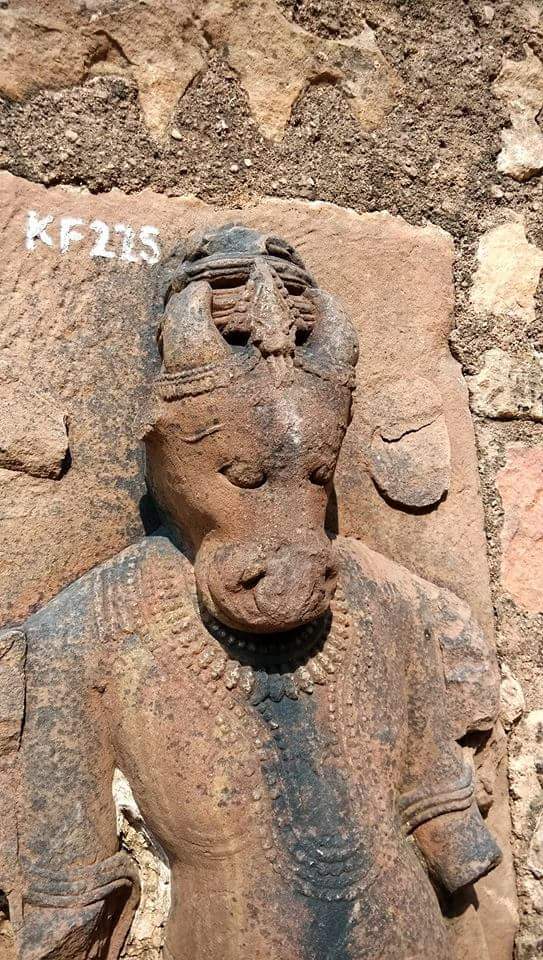
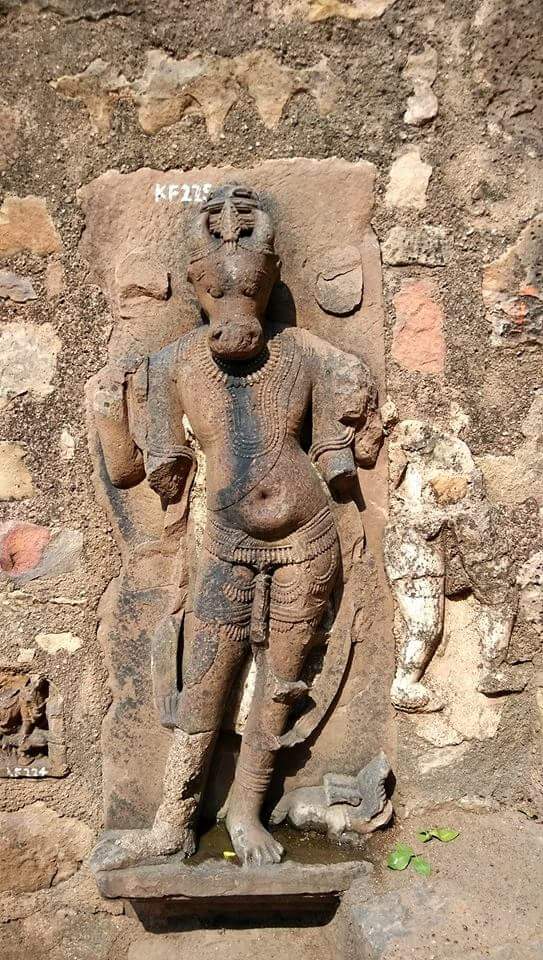
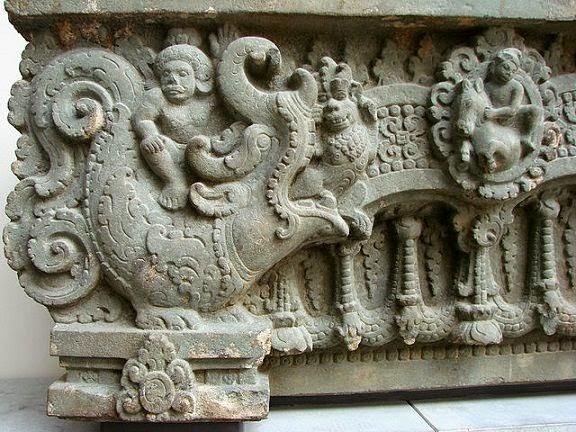

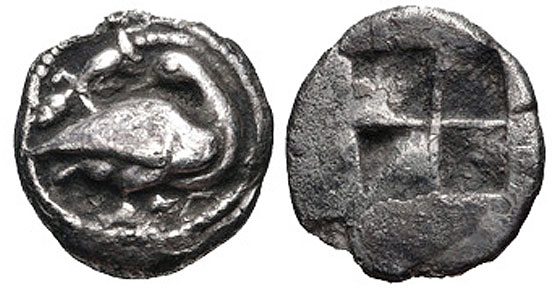




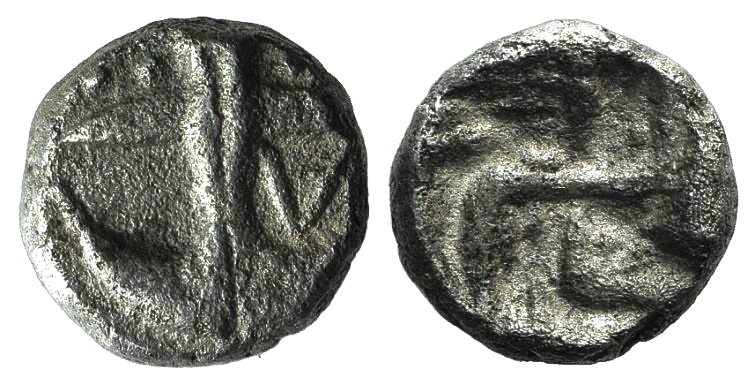




































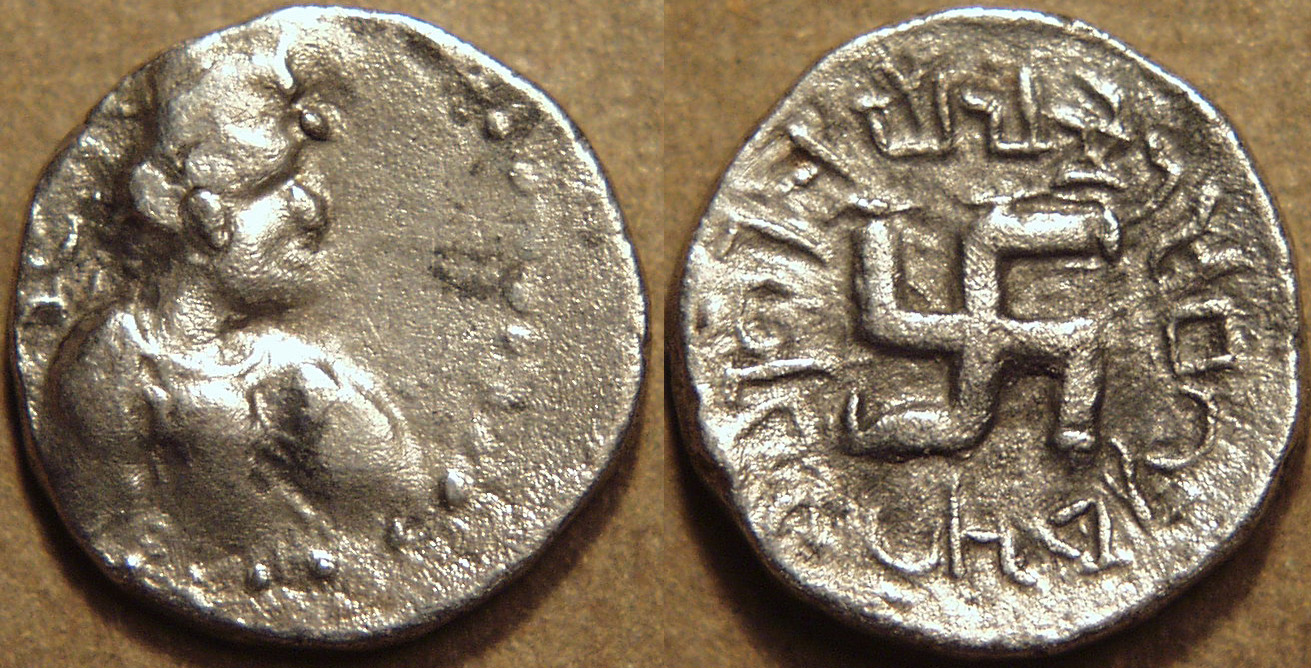

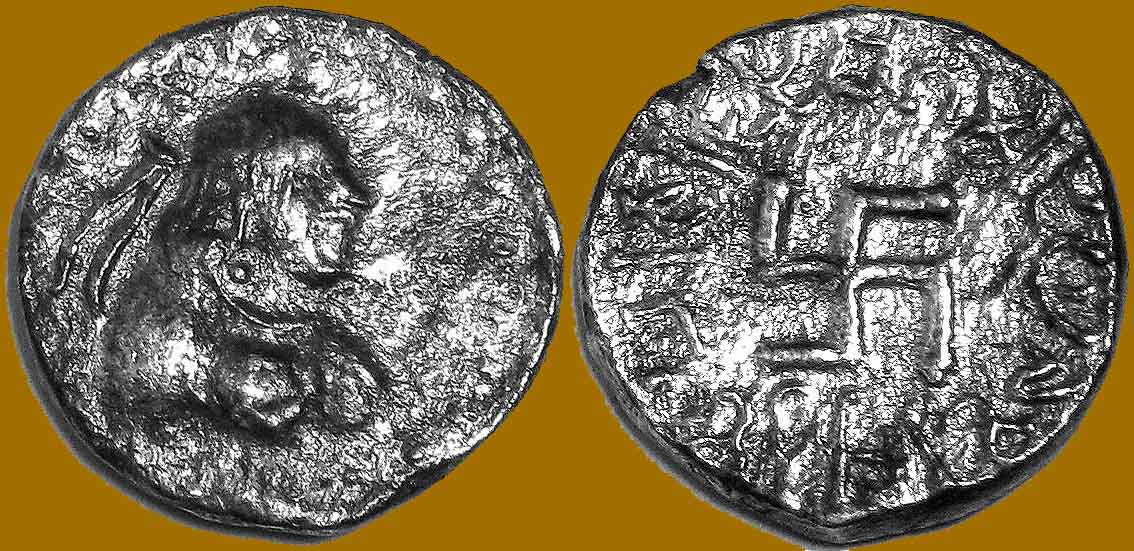

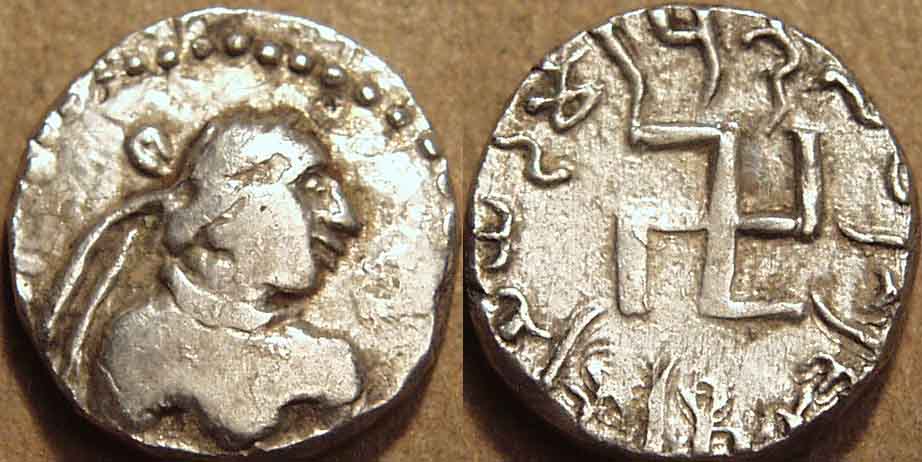
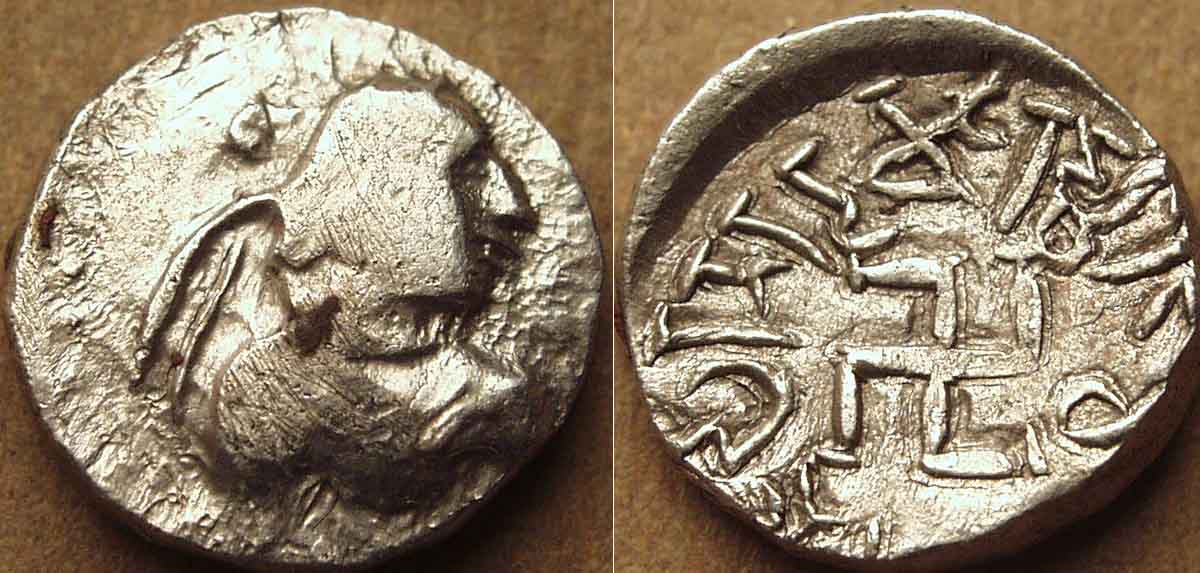
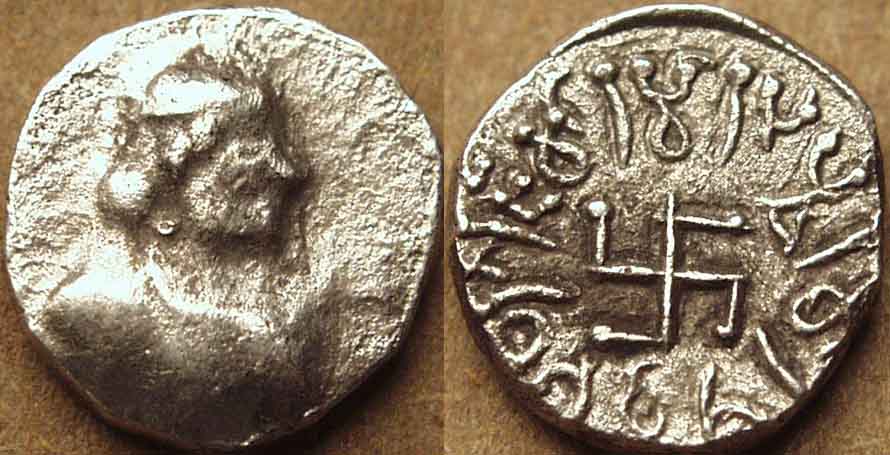
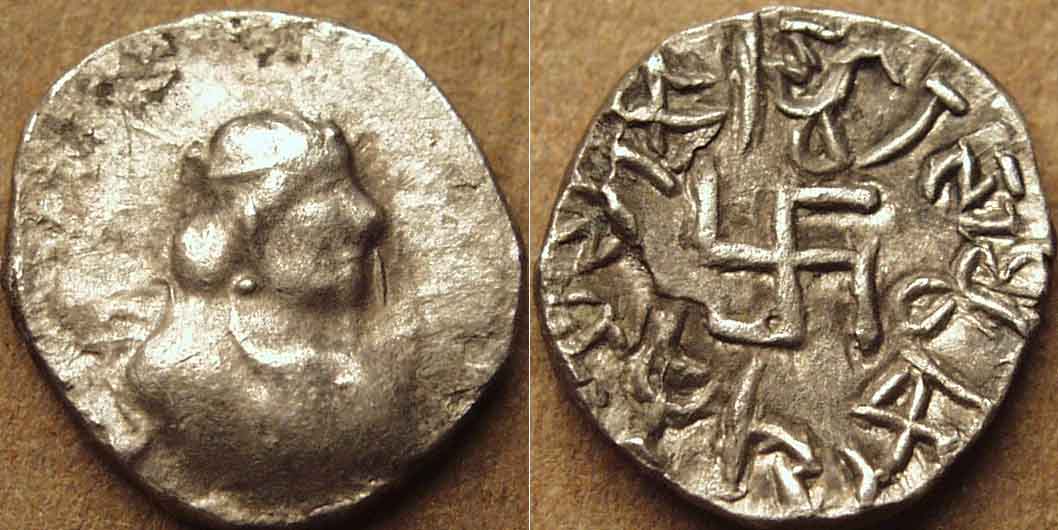
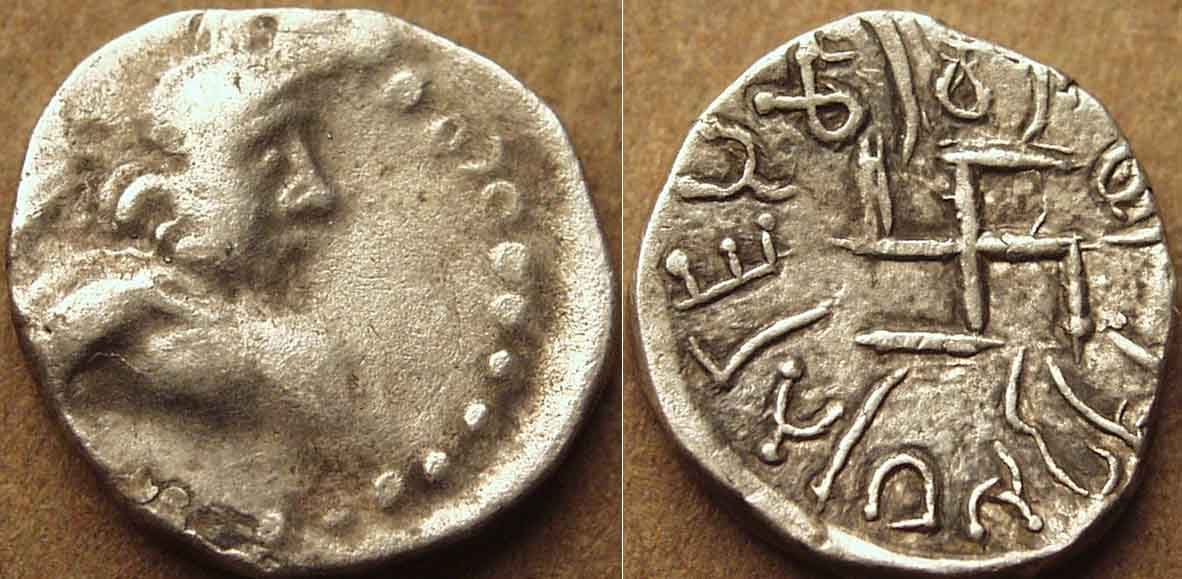

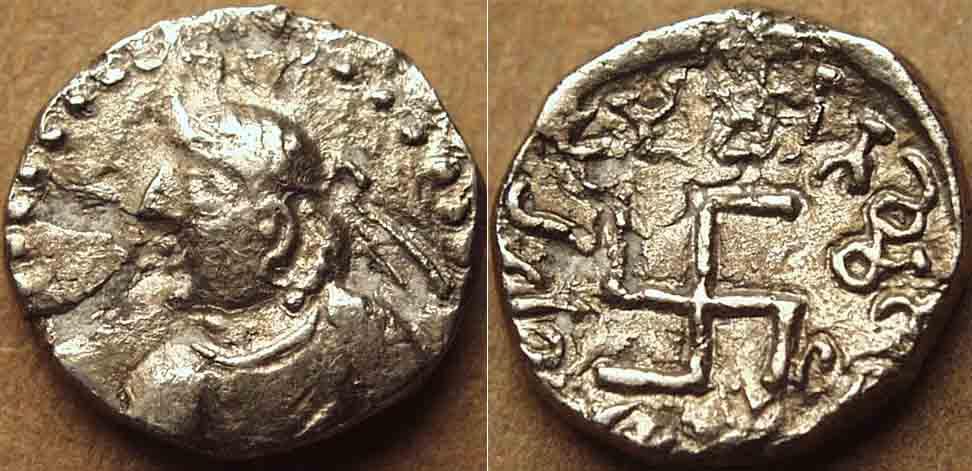



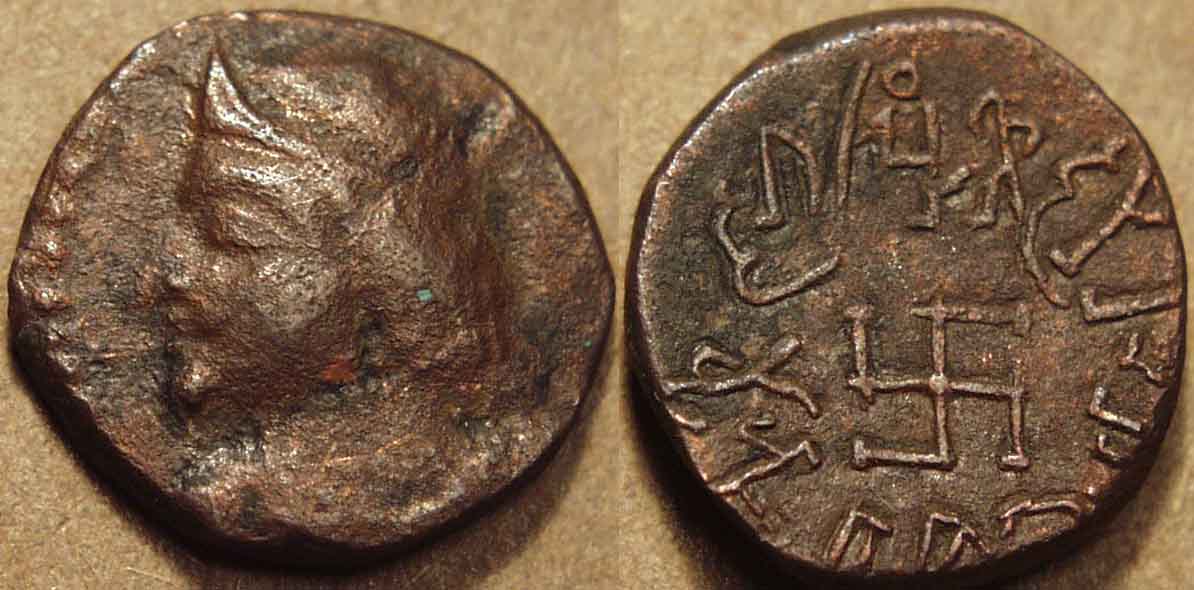
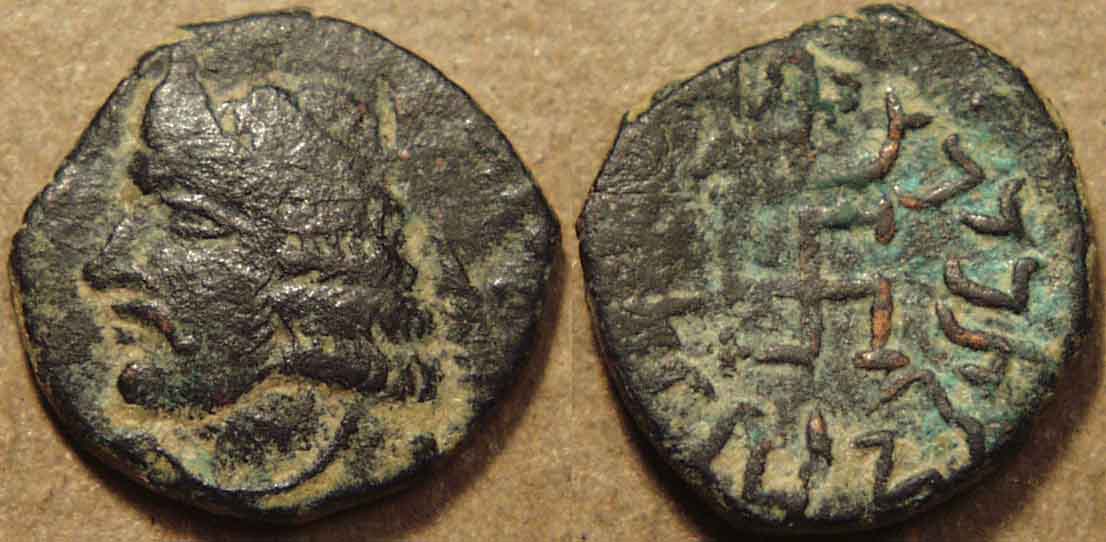






 Parataraja dynasty of Baluchistan
Parataraja dynasty of Baluchistan

 Zinc smelting furnace. Zawar
Zinc smelting furnace. Zawar











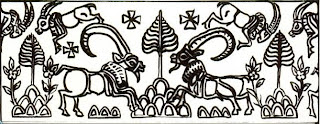









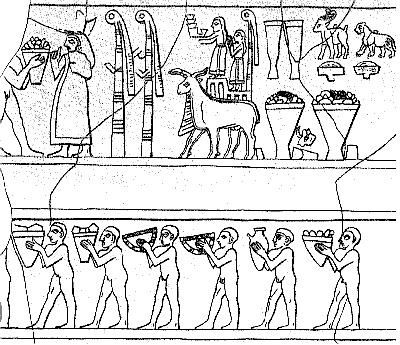
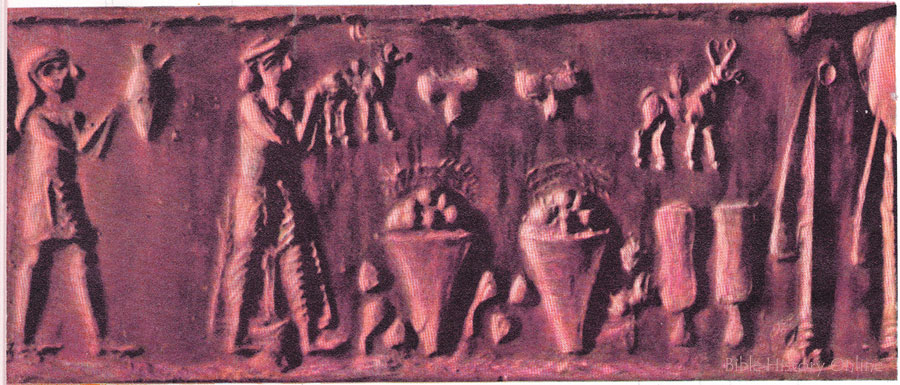




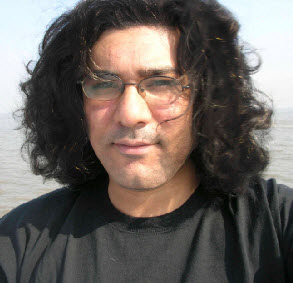











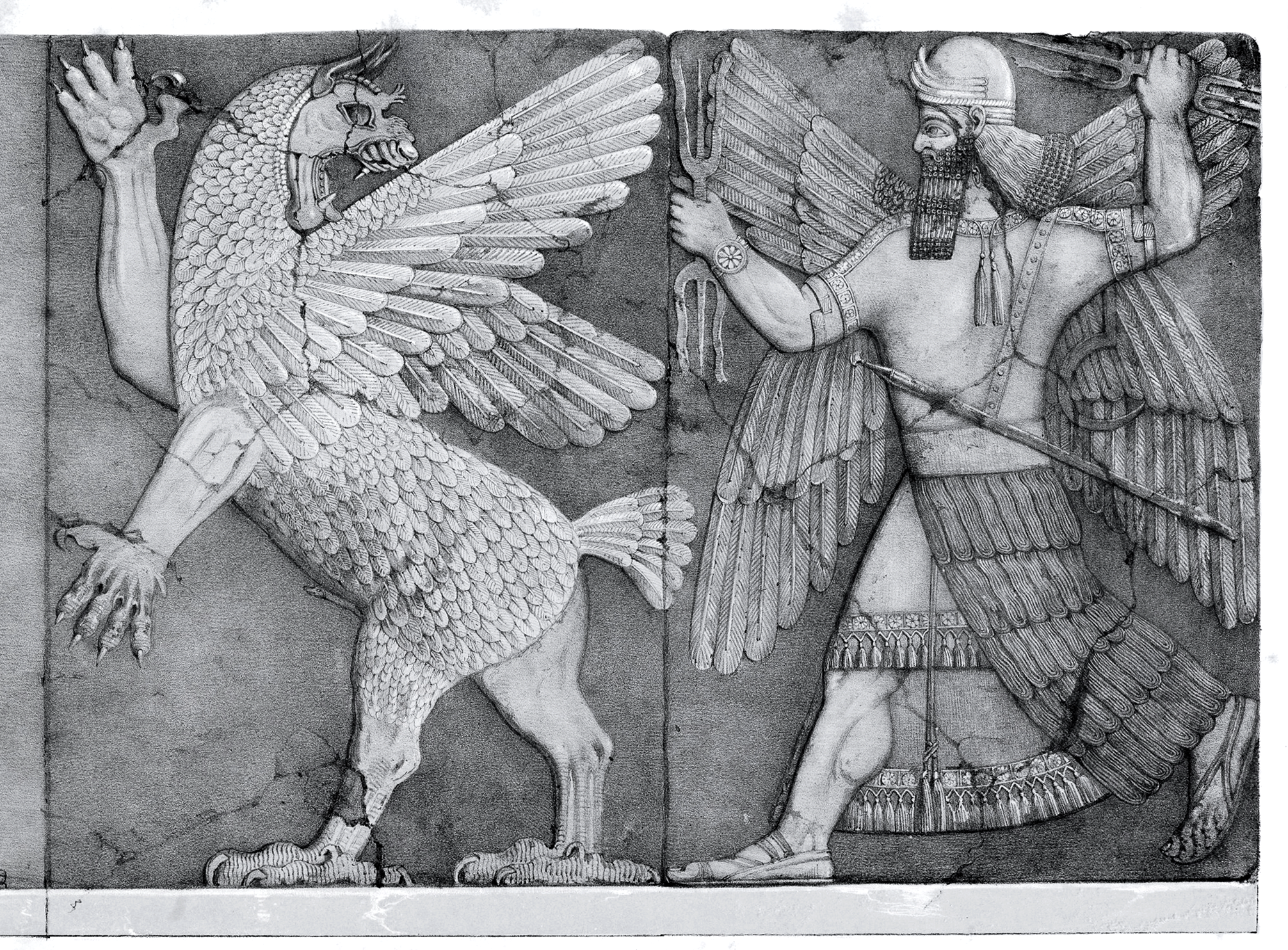








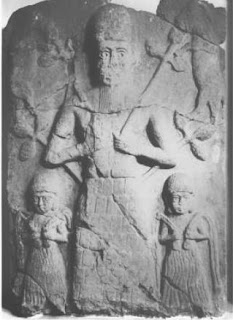



















 "
"






